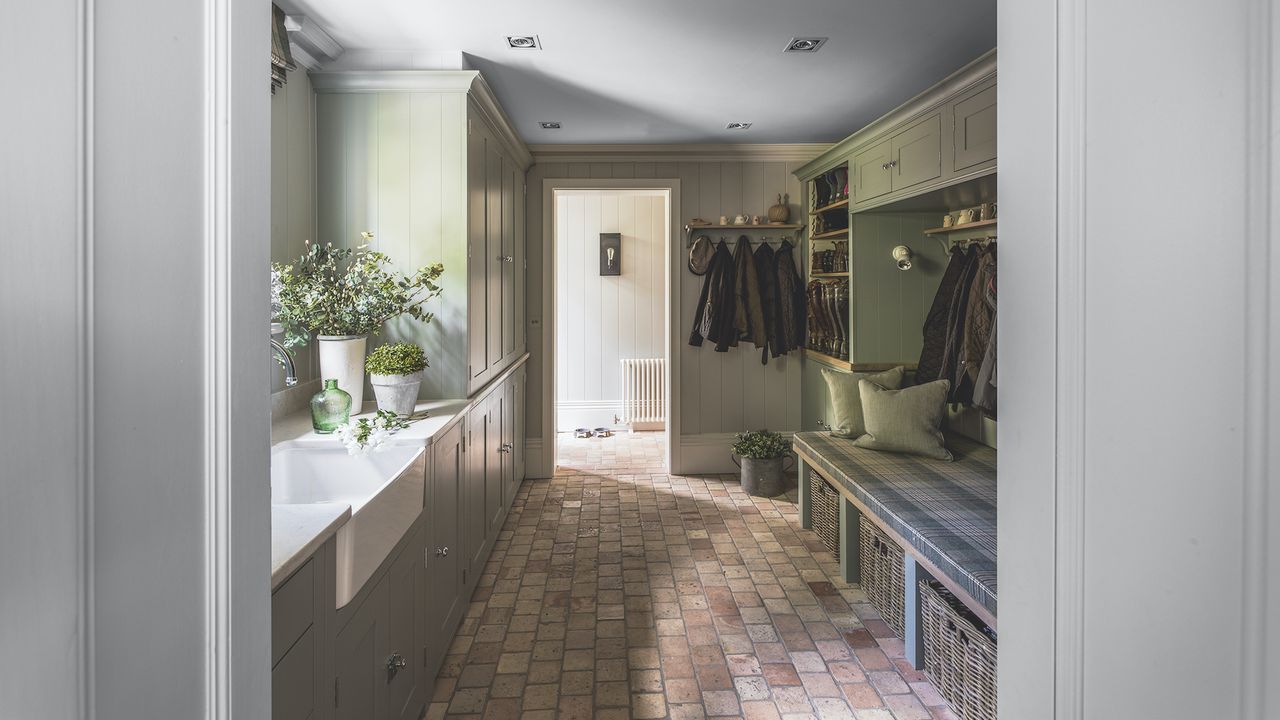
Boot room ideas might sound superfluous – do you really need a dedicated room just for boots? But a well-designed one can seriously upgrade how you live, especially if your days involve muddy shoes, soggy coats, or the occasional off-leash dog.
'A boot room can transform the atmosphere,’ says Berkeley Place founder Nick Cryer. He likens it to the transitional zones often seen in Japanese homes, where the boundary between indoor and outdoor storage ideas are treated with purpose. ‘This attention to functional beauty makes everyday life smoother and more intentional.’
‘It’s not just a room – it’s a daily reset point,’ he adds. From flooring materials to smart storage and wet-dog logistics, we asked interior designers to share their best ideas for creating a boot room that lives with you, and looks good doing it.
27 designer-recommended boot room ideas
Whether you have a full boot room, a laundry room hybrid, or just a cleverly carved-out entry corner, there are plenty of ways to make use of what you've got. From freestanding furniture to smart use of awkward nooks, these designer-approved tips make space for the messiest parts of life.
1. Tuck a small boot room under the stairs
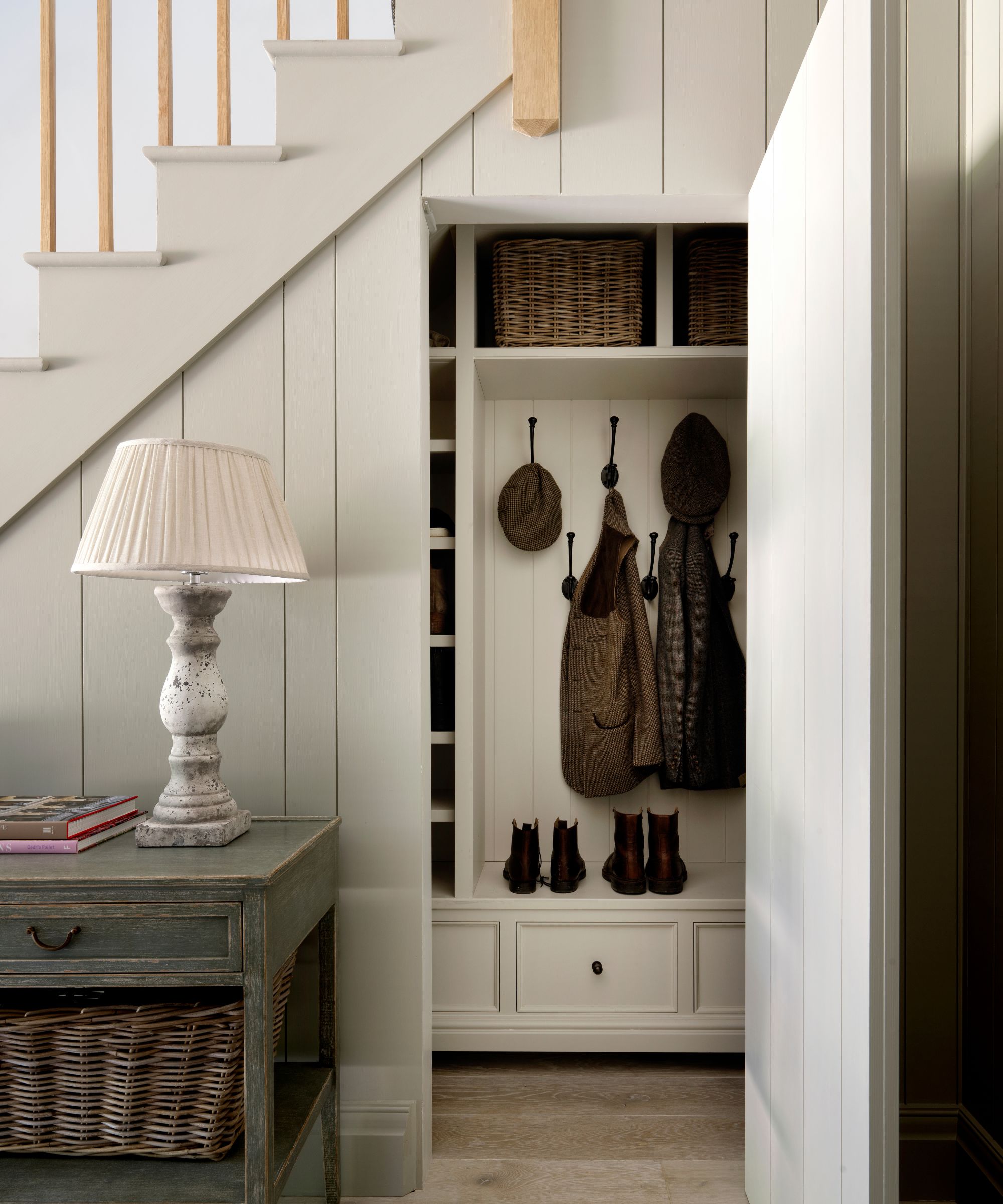
Think you might not have space for a dedicated book room? The space under your stairs can make for the perfect mini-boot room. While that nook sometimes isn’t large enough for, say, a powder room, it often provides just enough square footage for a miniature DIY boot room.
Make the most of it by fitting shelving as high as possible. Even the most awkward corner can store hats, scarves, or reusable bags. Add hooks or pegs for coats and shoe racks (or simply neatly arranged footwear) beneath, and suddenly you’ve turned a dead zone into a purposeful one.
And where ceiling height is limited, a bench with hidden storage can do wonders – a mini decompression zone where you can kick off your shoes (and the day) before heading inside. Just watch your head when you stand up…
2. Put the boot room on the porch
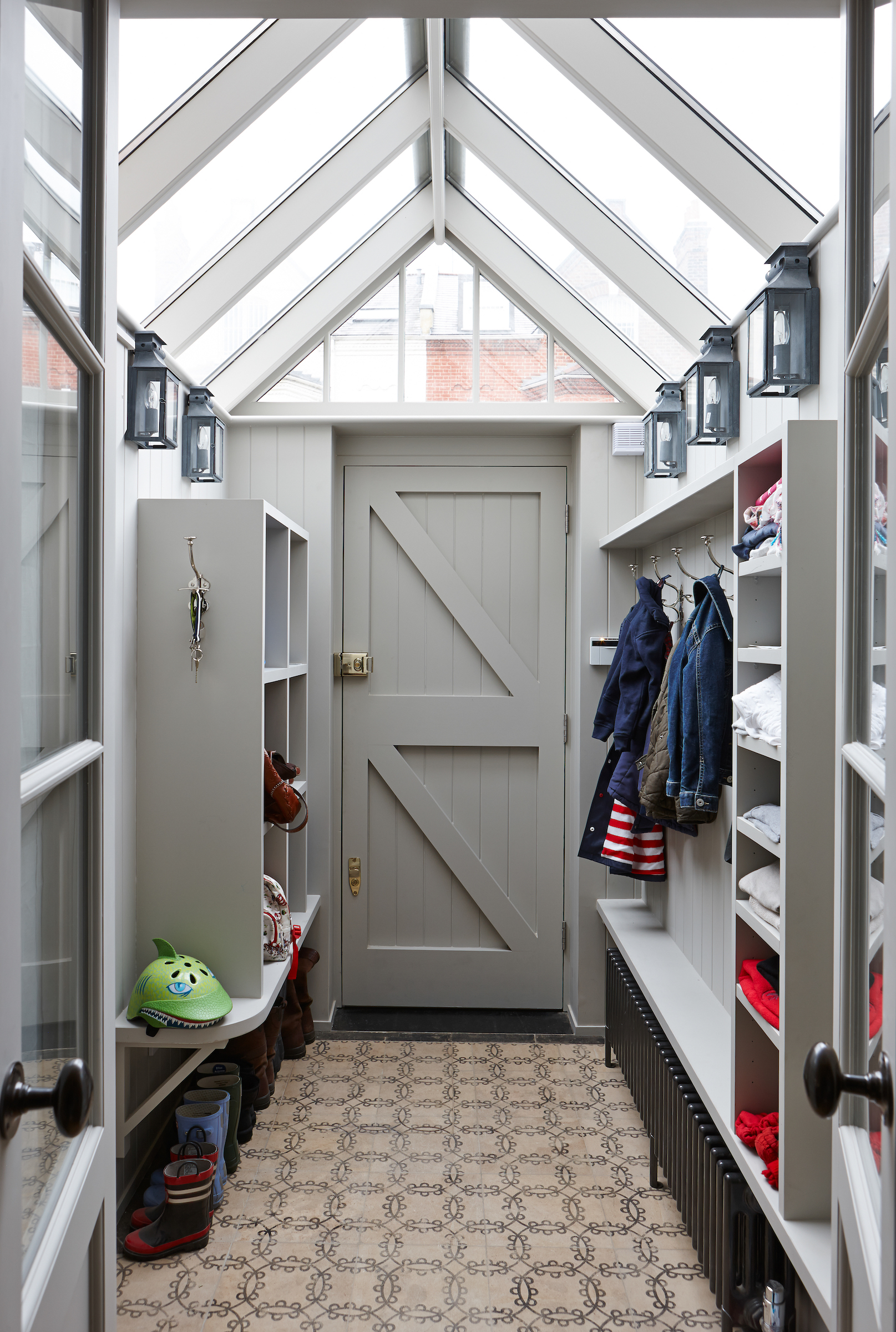
If you’re working with a back or front porch, it can double as your boot area. Keep it tidy with hooks, lined-up boots, and a coir mat to trap mess. Charlotte Crosland designed this entrance, pictured here with pale paint and a pitched glass roof to keep it light and spacious. Smart design can make even the smallest boot room zones feel intentional.
3. Double up with the utility room, pantry or even laundry
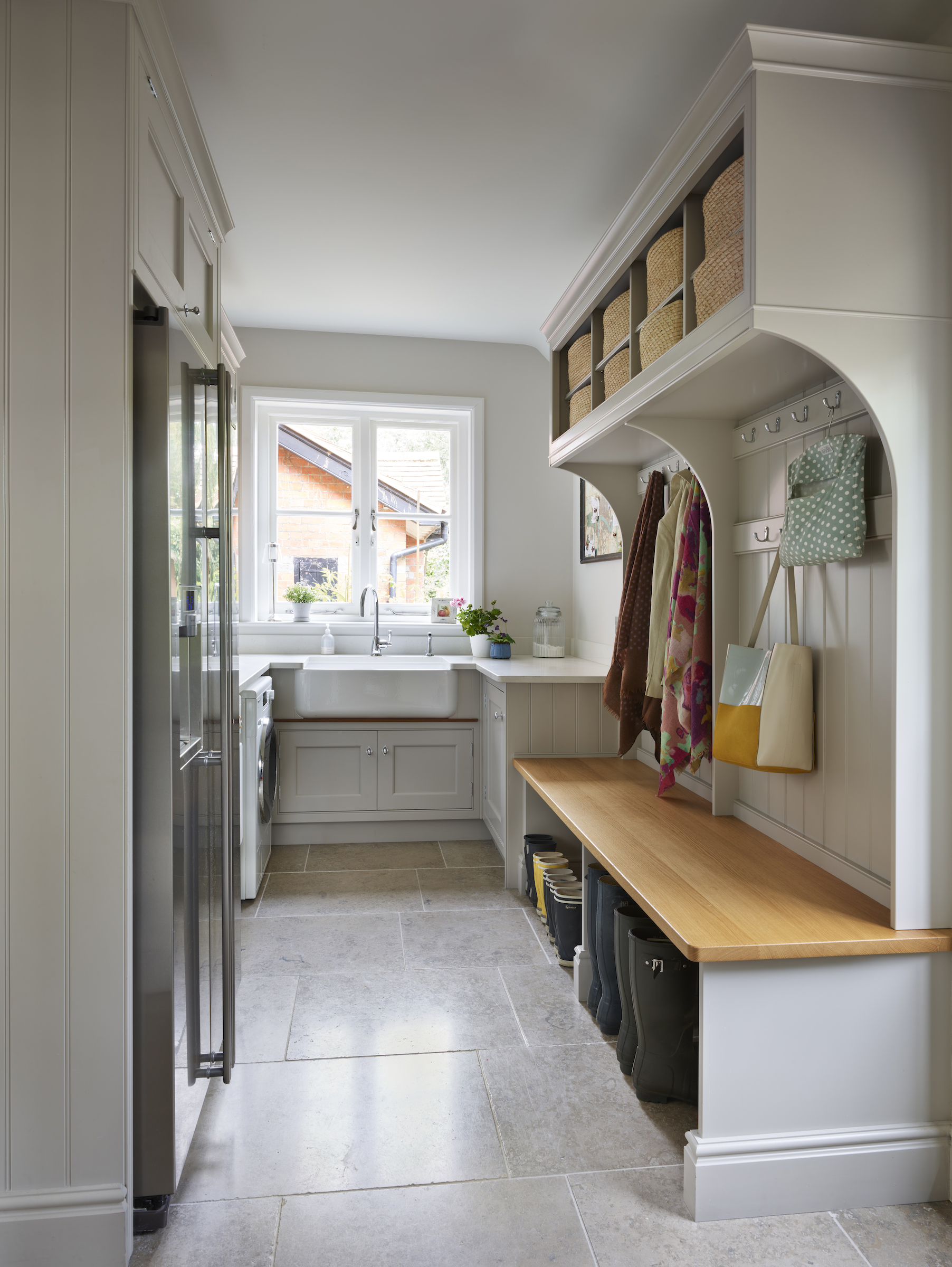
No need for dedicated rooms – boot rooms can multitask. With proper cabinetry, they can easily merge with a utility space or act as overflow for pantry storage.
Graeme Smith of Life Kitchens says, ‘With the addition of pantry cupboards and open shelving, a boot room can be more than a place to store wellies, shoes, umbrellas, and pet baskets. It can also house additional dry goods and laundry products.'
4. Make use of one wall
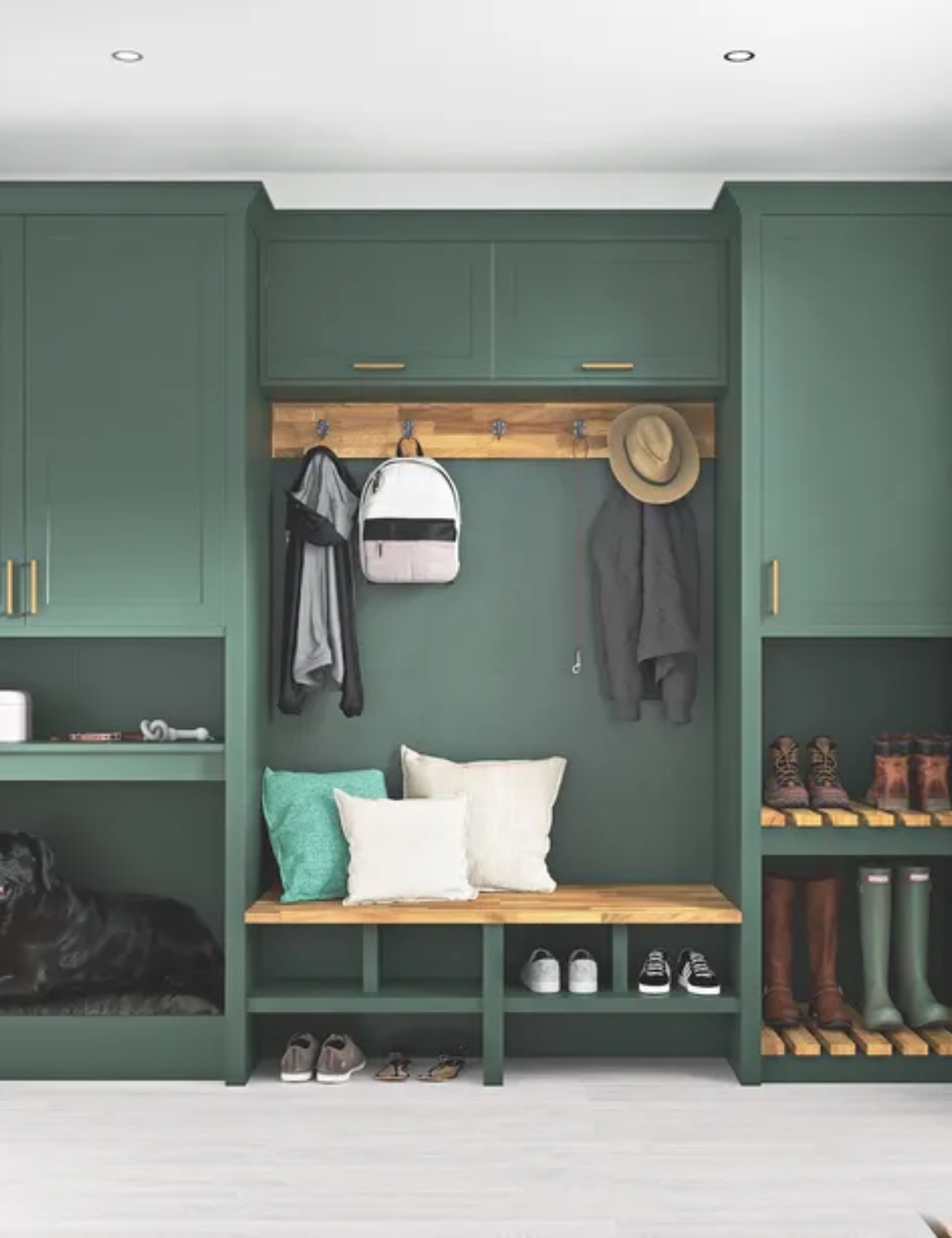
Keeping a small boot room defined within one wall of made-to-measure storage is ideal when you have a limited or shared space – perhaps you're incorporating yours into your kitchen or back porch, or want to reduce the area a small boot room takes up within your home.
Factor in the elements you need, including shoe and boot racks, hanging rails or pegs for coats, and additional shelving or baskets – you might even find room to squeeze in a dog bed.
Opting for closed cabinets will keep the look neat and streamlined, so it doesn't overwhelm the space, while painting it in a dark, block color, as above, will hide dirt and give it a smart, zoned look.
5. Build in storage for wine
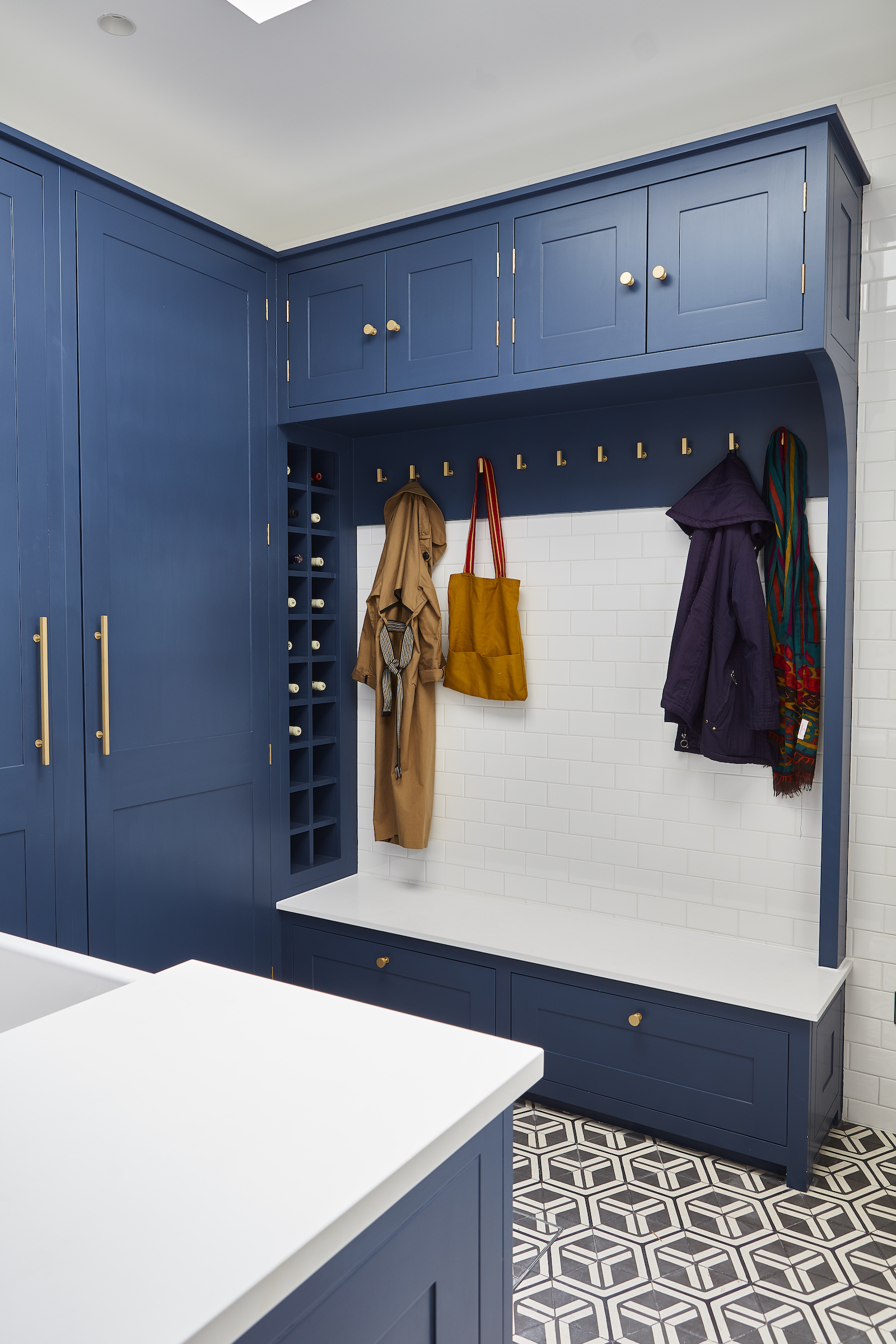
A multifunctional boot room with built-in wine racks, appliances (kept discreetly behind cupboard doors), and vertical storage can easily become the most-used room in the house.
Design studio Blakes London, for instance, added ample personality to the project pictured above with cabinets in an inky blue and geometric cement tiles on the floor.
Beyond style, storing wine away from the heat of the kitchen also protects it from temperature swings. Think of it as a tiny, not-so-secret speakeasy: a spot to grab a bottle on the way to a dinner party or an impromptu night in.
6. Open up a boot room with a barn door
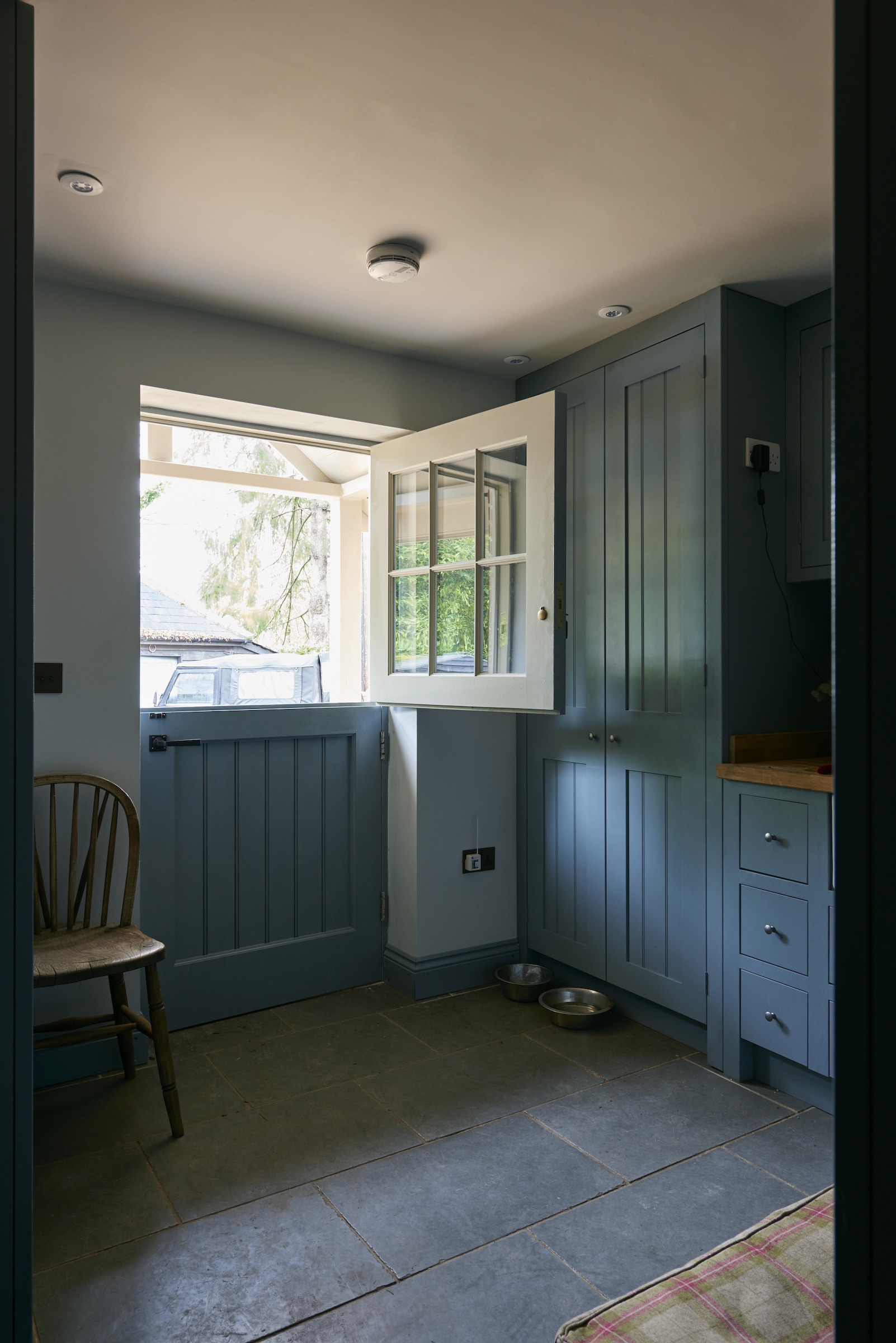
Keeping a boot room well aired is essential to ensure clothing and footwear dry out after muddy walks, and items don't become musty or mildewed. While windows or air conditioning will keep air flowing, why not consider a barn door for your boot room, especially if you live in the country?
A barn door was chosen for this boot room, and it makes a huge difference to the overall look of the space. It adds a traditional, characterful detail to your space, keeping pets in – and chickens out – while allowing fresh air to fill the space.
7. Integrated ventilated storage
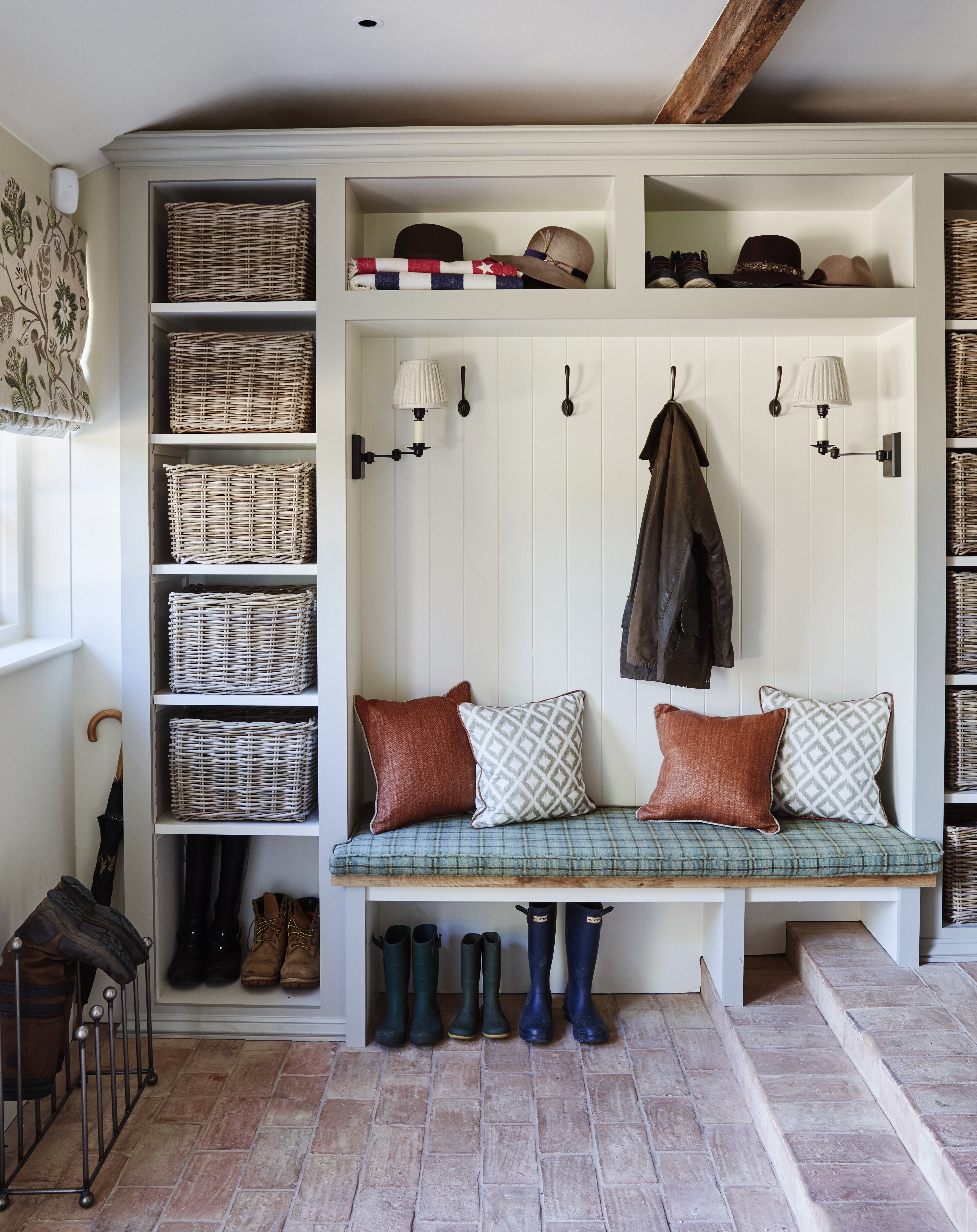
Boot rooms see a lot of moisture, so proper ventilation is essential. ‘We often design ventilated upper cabinets to allow air to circulate around coats and gear,’ says Cherie Lee. ‘Perforated panel doors are both functional and beautiful.’
Designer Juliette Byrne favors lattice-front cabinets or paneled wardrobes that allow air to flow. It's a practical detail that also adds visual interest.
8. Make space for dogs
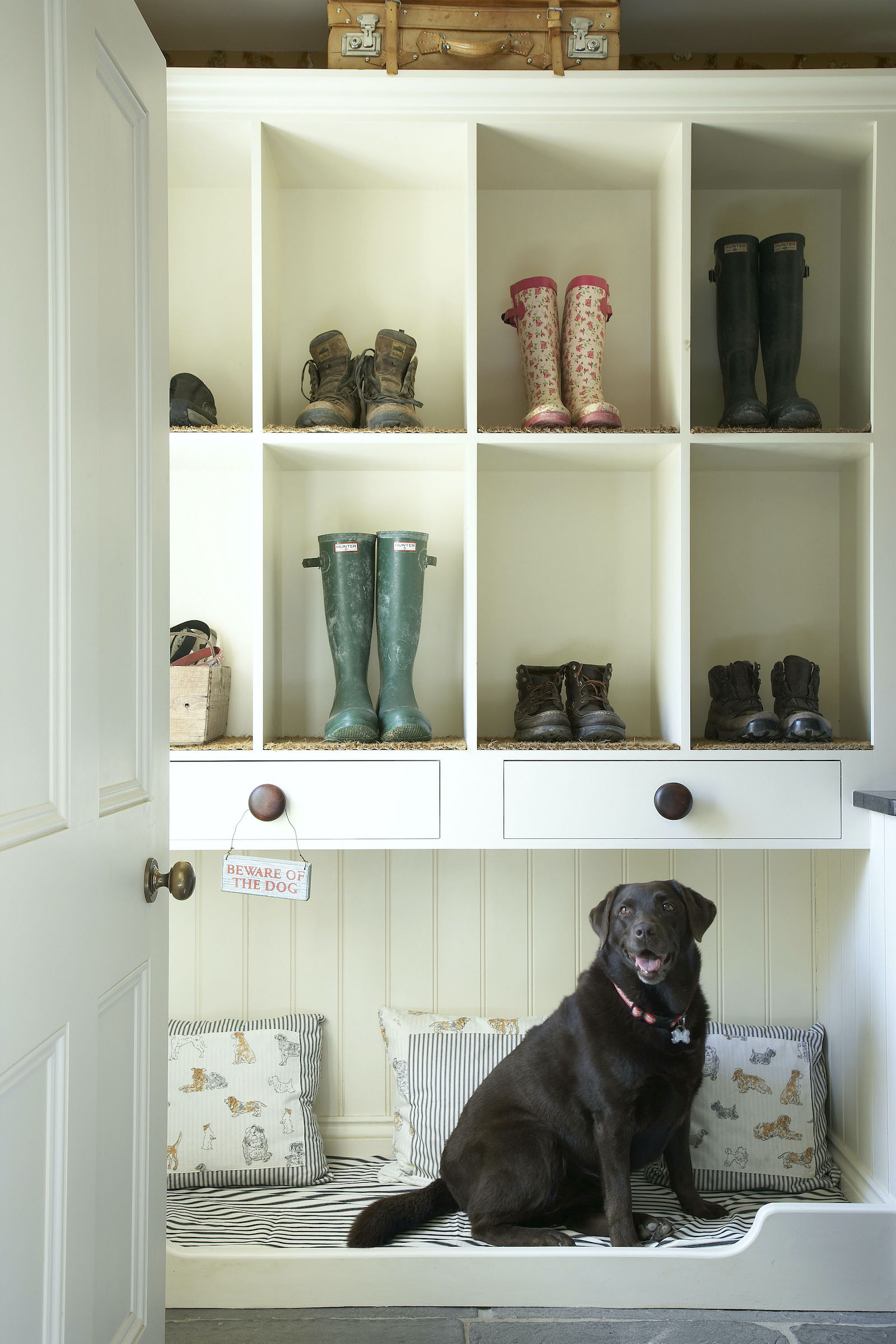
So, you've created a pet-friendly backyard, but can the same be said for your boot room? Giving your pooch its own space will help to keep fur and fluff contained.
A raised pet bed, for instance, keeps pups warm and prevents mildew under the mattress. Built-in showers or ledges for towels and leashes are practical without being over the top.
‘Especially useful in country homes or for pet-loving families, a dog shower is both a luxury and a lifesaver,’ says Jessica Hubner of Collection Seven. Even a small towel hook setup makes a difference.
9. Choose hardwearing, rustic flooring
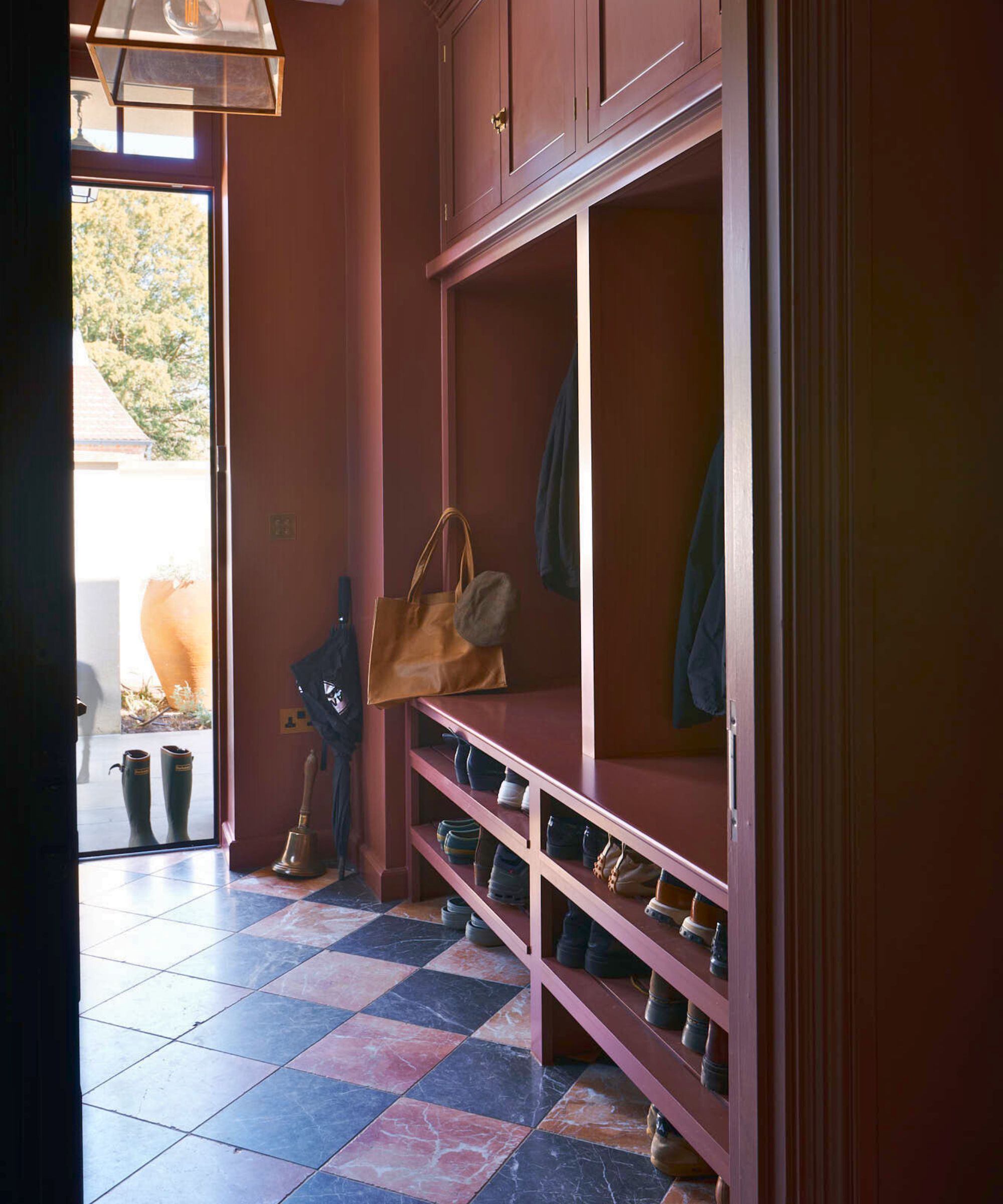
Boot rooms – by nature of them being boot rooms – get a lot of foot traffic, so don’t be afraid to go with hearty materials. ‘Think reclaimed stone, brick pavers, or even cobbled tiles,’ says Jessica Hubner.
‘These surfaces not only look beautifully grounded and authentic but also stand up to the demands of real life – wet boots, paw prints, and all. They age well, too, developing a patina that adds character rather than needing to be replaced.’
10. Go cozy with underfloor heating
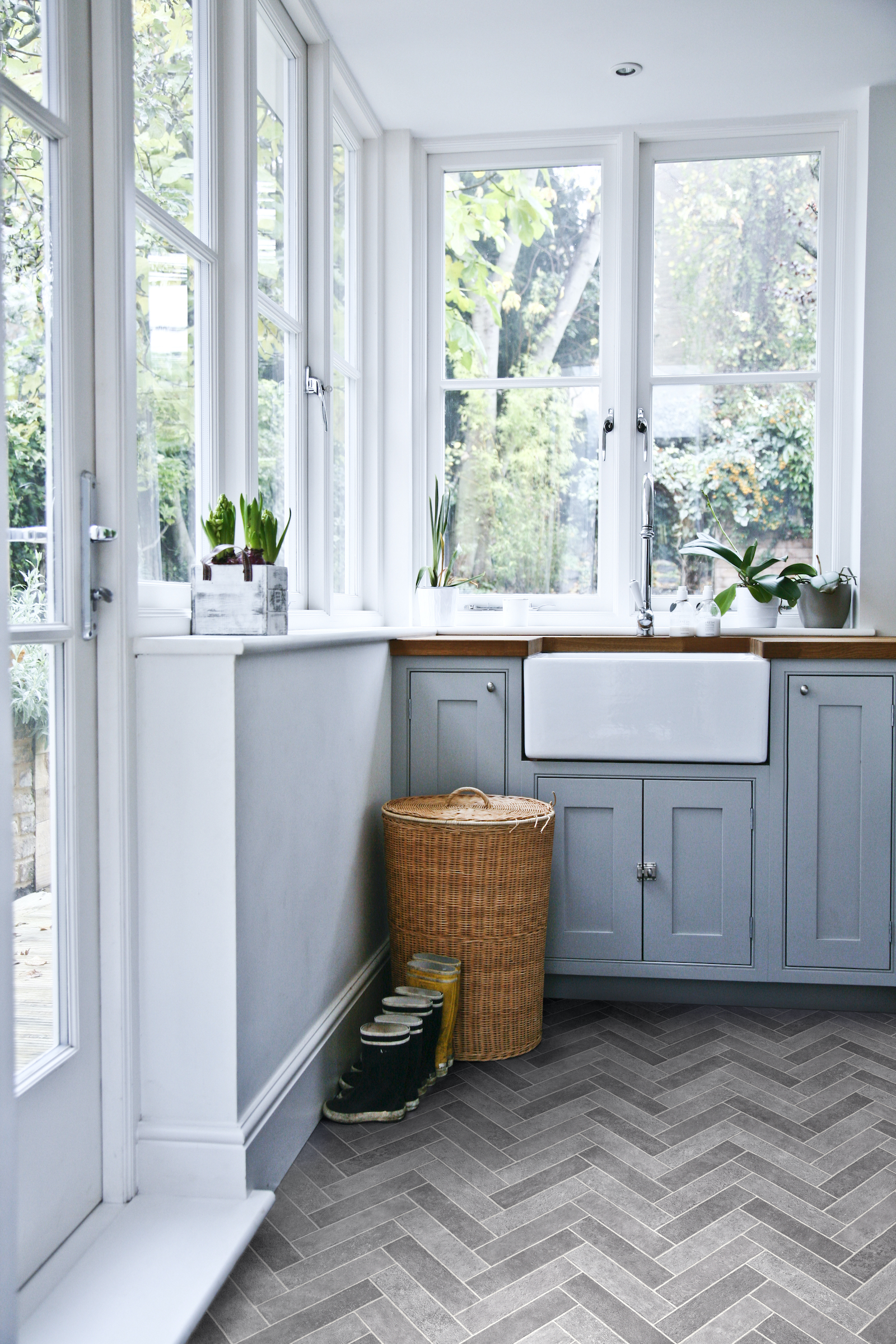
'You may wish to add a touch of luxury to your boot room and consider underfloor heating,' suggests Inga Morris-Blincoe, General Manager at Lifestyle Floors. 'There’s nothing better than coming in from a long, cold walk, slipping off your shoes and feeling the underfloor heating warm you through.'
Dryback luxury vinyl tiles are usually compatible with underfloor heating, but always check with the manufacturer first.
Inga's advice: 'In addition to being waterproof and easy to clean, you should look for a floor with a long wear warranty, to ensure it can cope with the demands of a busy family boot room.'
11. Add 'wow' factor with statement flooring
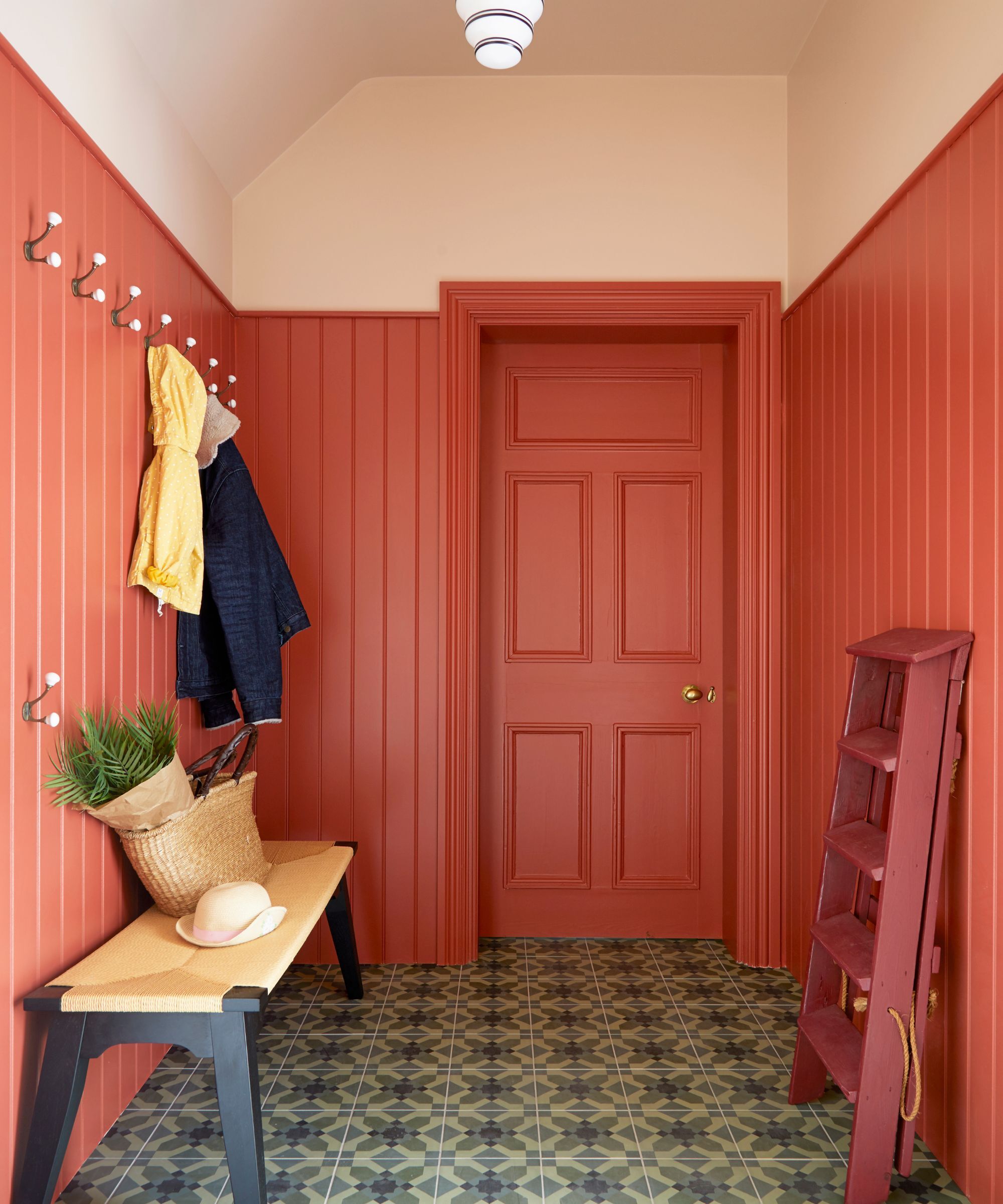
This room doesn’t need to fade into the background. A distinctive floor, such as checkerboard floor tiles or beautiful stone flags, will do the trick – and will be practical, too.
'A practical, hardwearing floor is necessary,' explains Adrian Bergman of Plain English. 'Make sure it’s easy to clean and ready for muddy boots. And consider underfloor heating. After a cold walk in the rain, the warmth under feet is an indulgence, but it also aids drying wet boots, shoes, or dogs!'
12. Choose surfaces with care
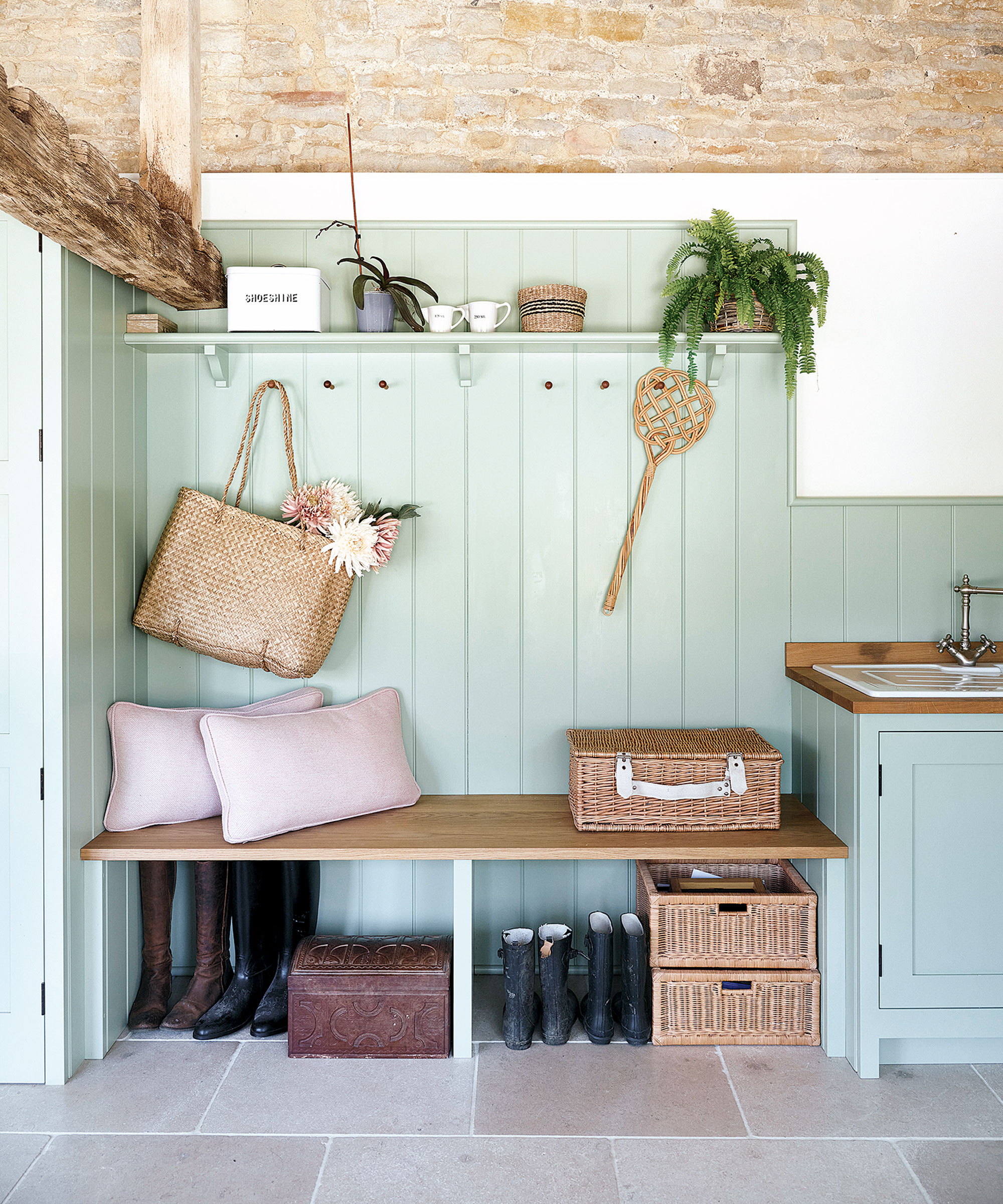
'Boot rooms need to be hardwearing to cope with day-to-day family life, as well as muddy boots and paws,' says interior designer Jojo Bradley. For flooring, consider brick, flagstone, or concrete. 'Or opt for a matt porcelain tile that can be easily cleaned and stand the test of time.'
'For countertops, use quality granite or quartz, keeping them light and bright,' Jojo adds. 'Marble effect can give an air of luxury in this small space.'
13. Add a sink
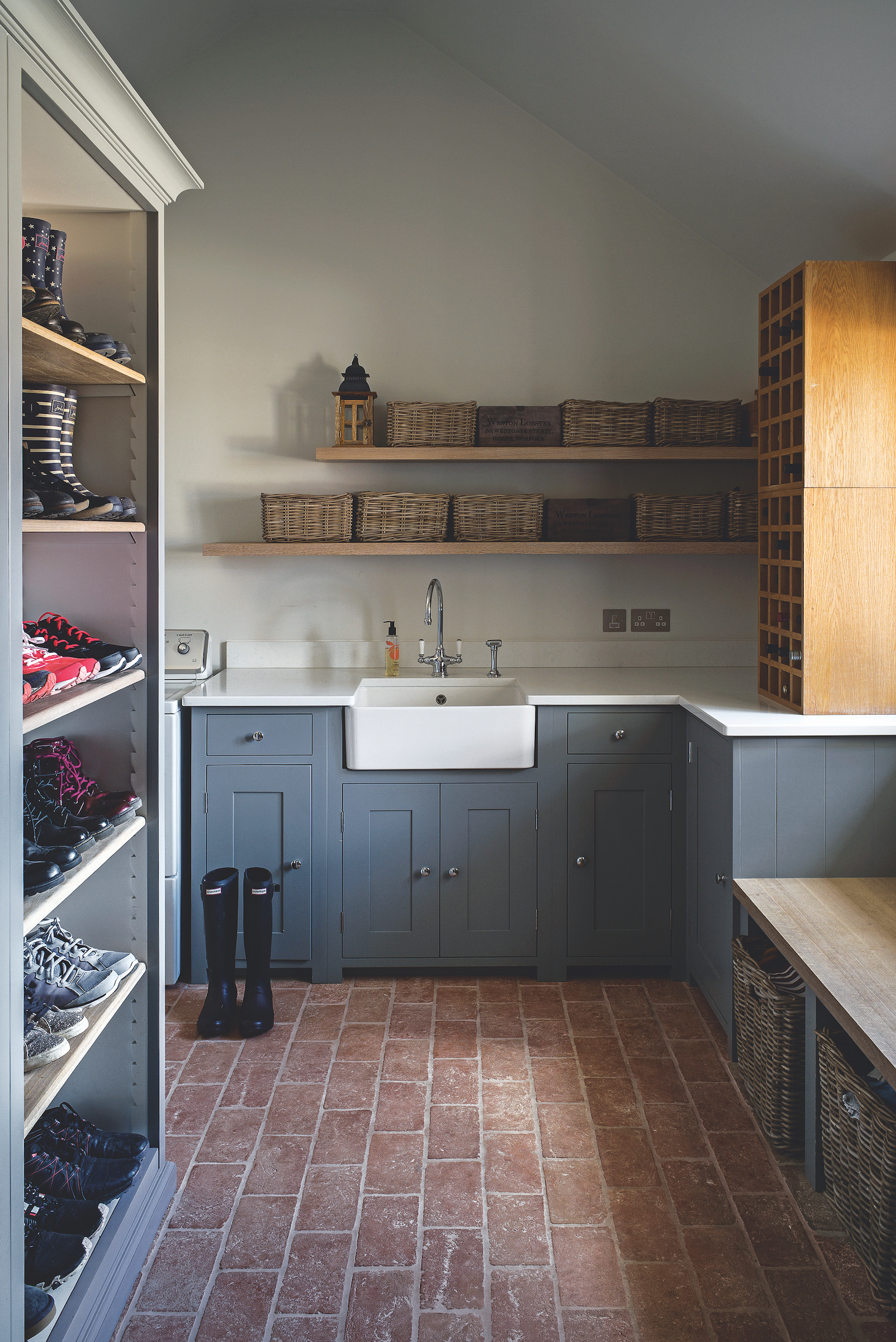
'I’m a big advocate for including a sink in the boot room if space allows,’ says designer Cherie Lee. ‘It’s great for rinsing muddy boots, cleaning up after gardening, or even prepping flowers.’
A farmhouse sink offers the depth you need, and a flexible-hose tap makes clean-ups even easier. ‘At our Lemsford project, it’s positioned beneath a window, so the whole area feels fresh and inviting,’ she adds.
14. Commission bespoke joinery
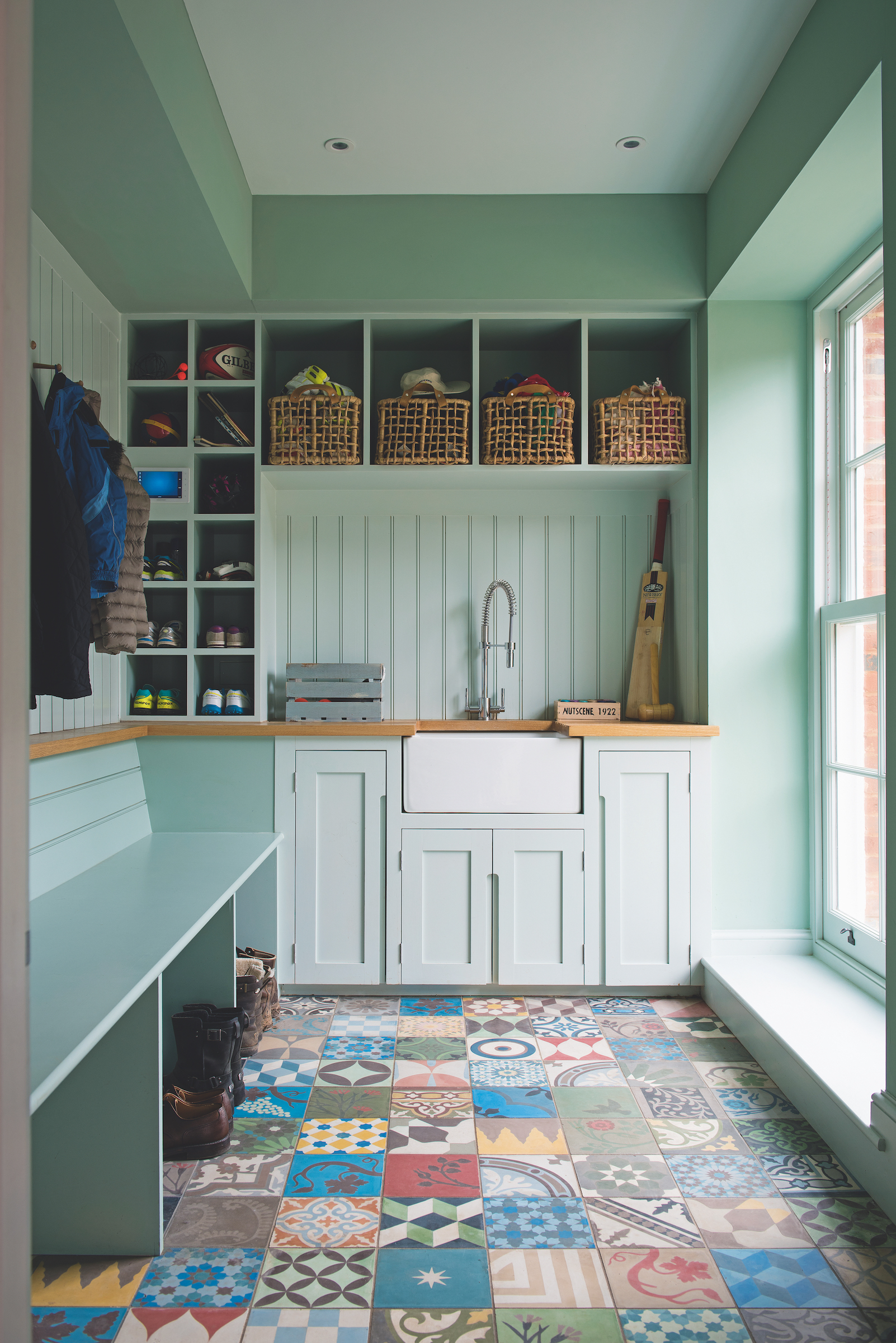
Custom cabinetry might seem indulgent, but it’s worth it. ‘Bespoke cabinetry gives everything – from wellies and walking sticks to reusable shopping bags – a dedicated home,’ says Jessica Hubner. She recommends mixing open shelves, closed cabinets, and cubbies, and integrating bench seating. A custom build also lets you work around awkward architectural features, maximizing every inch.
15. Build storage around a window
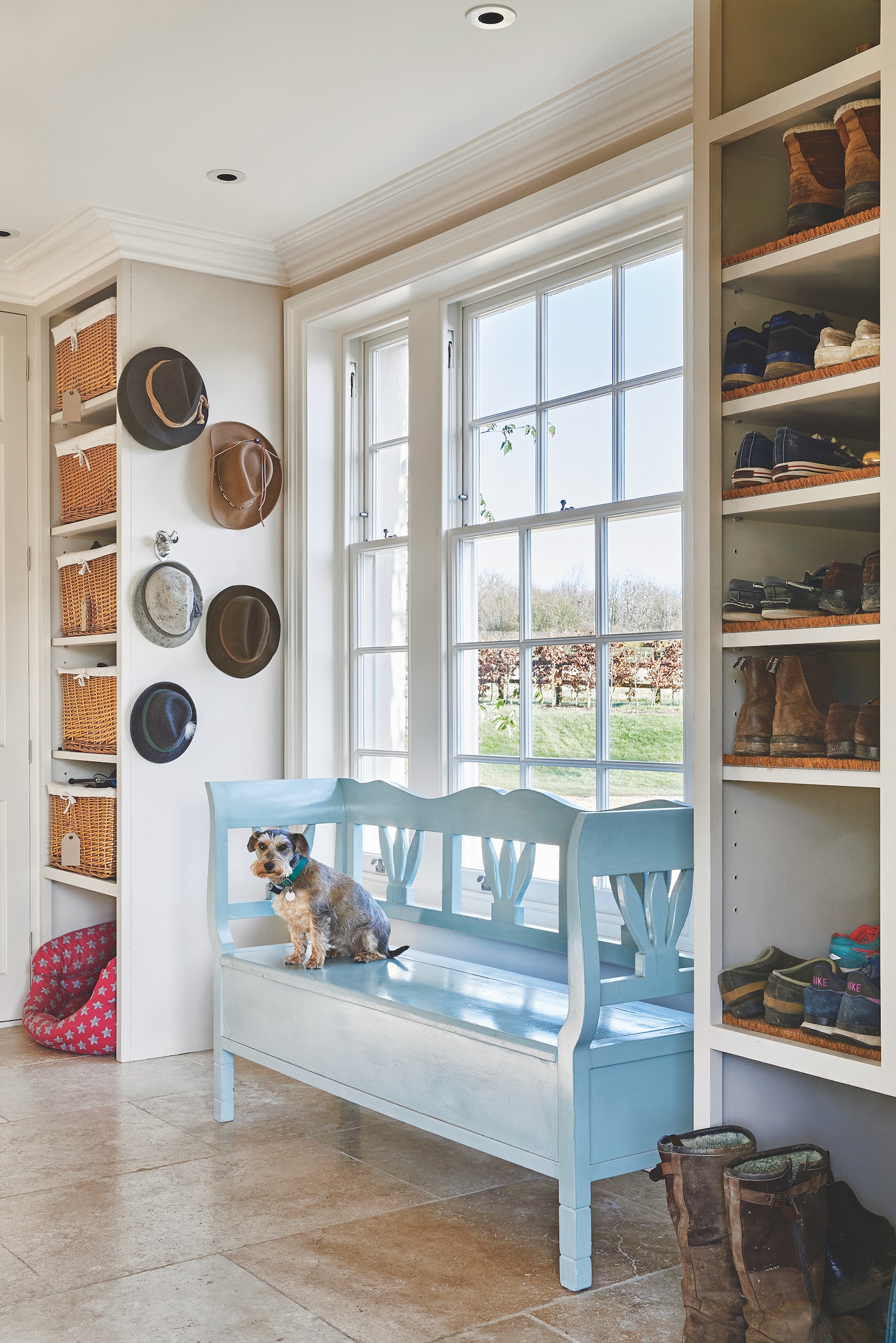
This attractive set-up has all the attributes of a classic boot room – shoe and hat storage, baskets, and a pet bed, even a bench – but building the shelving around a large window changes the perspective and creates a charming window seat idea.
Instead of looking at the boot room contents, the eye is drawn to the pretty blue bench and the view beyond. This is an ideal option when you need to incorporate a boot room in a hallway at the front of the house but don't want it to take over the space.
16. Ensure to include plenty of closed storage

'For easy access to coats and other belongings, open storage is a favorable choice in a boot room,' says Alex Main, Director, The Main Company. 'However, if you prefer to keep everything neatly stored away, we would recommend a closed storage solution.'
Classic overhead lockers are perfect boot room ideas, combining concealed storage with the best use of space as they extend upwards to the ceiling. It's a great way to maximize vertical space with thoughtful storage ideas.
Store away items that are used less frequently, such as camping and hiking gear. Or swap the contents seasonally, packing cold-weather kit away in winter, or stashing summer hats and sun umbrellas during fall and winter.
17. Create inviting, personalized zones
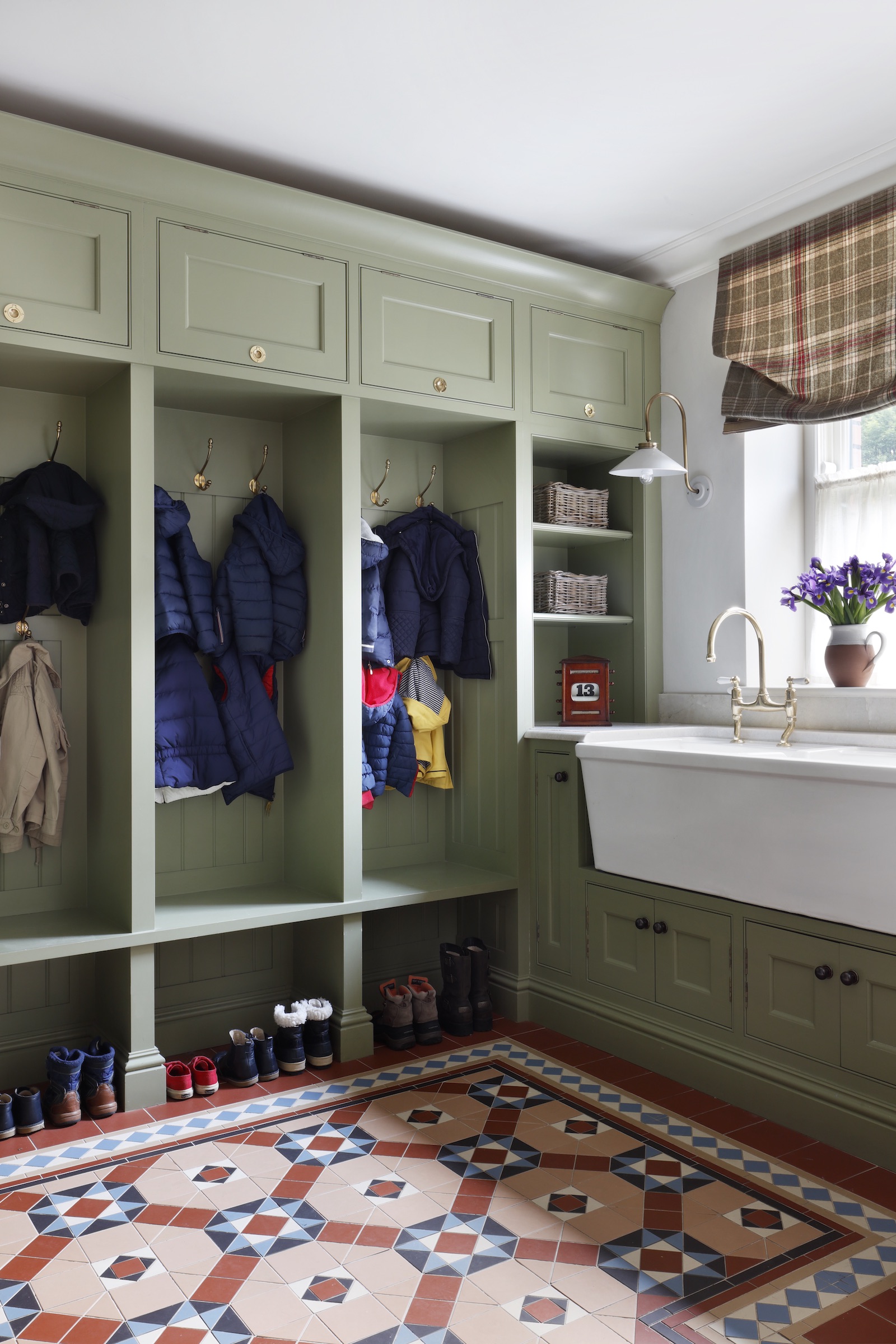
The best way to encourage the whole family to actually use the boot room? Make it feel personal. Dee Gibson of Velvet Orange suggests ‘pretty racks for hats and bags dedicated to each person, with initials if possible.’
Juliette Byrne agrees: ‘Hooks labelled or spaced for each family member (or guest) create order and a boutique-hotel touch that feels both smart and intimate.’
Cushions in washable fabric, attractive wooden hooks, and individual baskets make the space more welcoming (and more likely to be used).
18. Add hooks for easy coat drying
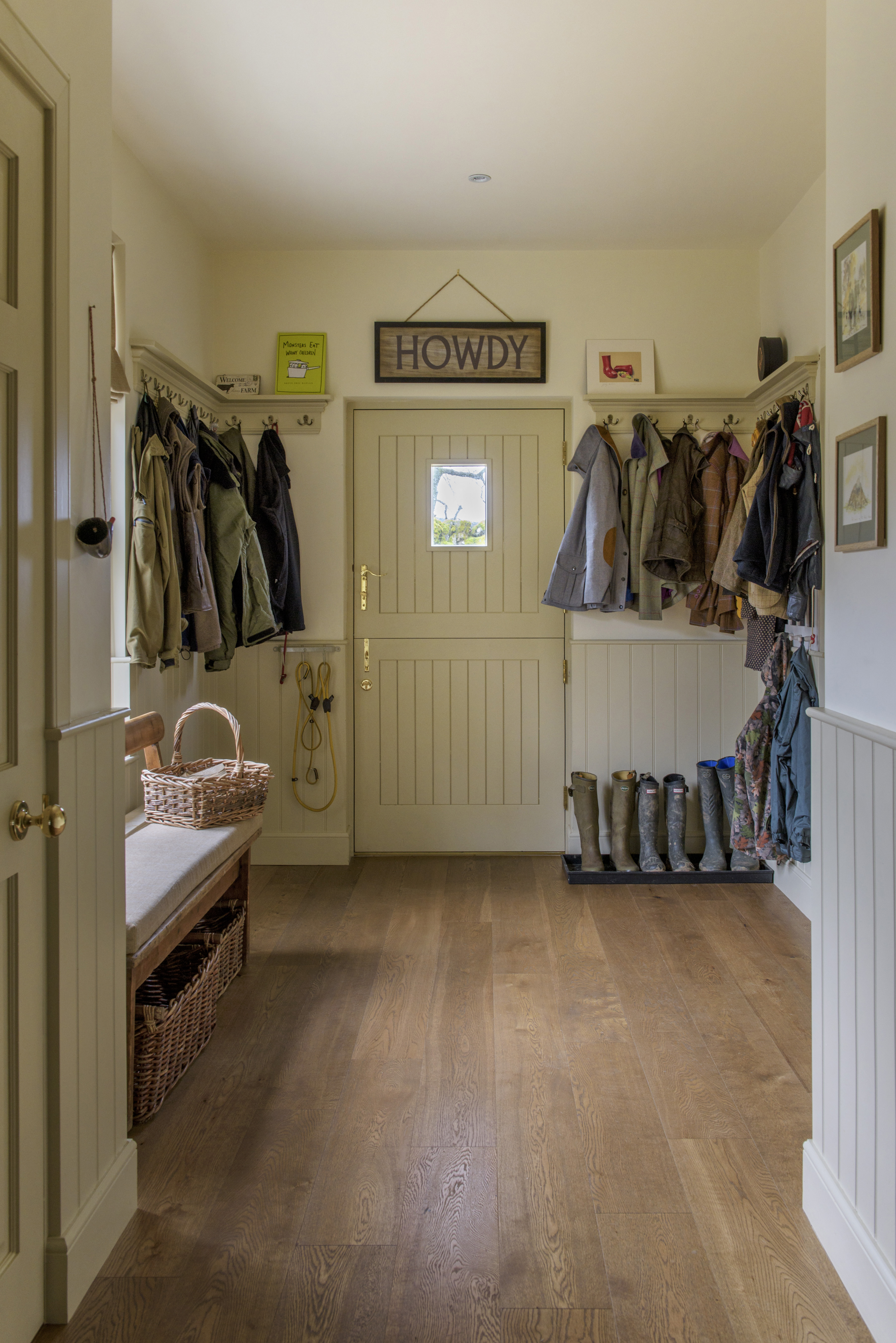
Wall hooks are a non-negotiable boot room idea – especially for households with kids or pets. 'Dry stuff can be kept behind cupboard doors, but it's good to have open storage when you're ticking off your boot room ideas, for air circulation and to avoid mildew,' advises Dee Gibson. It helps prevent mildew and keeps things in rotation.
Position hooks at adult head height with a lower rail for little ones, and consider dividing the zone between wet and dry outerwear.
19. Add make sure to place them near a radiator
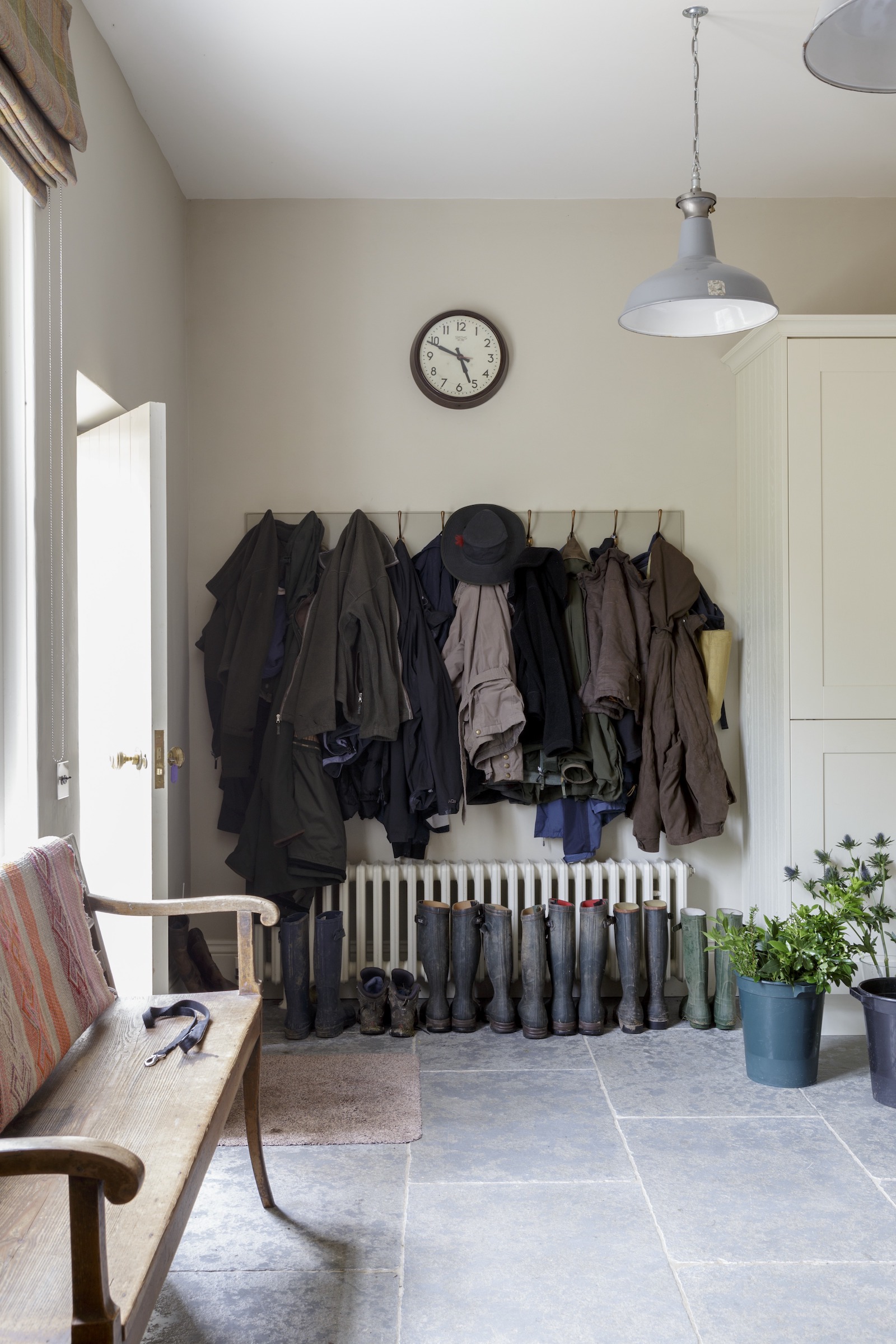
You don't want wet coats and boots sitting in your boot room without getting dry – it's an easy way to damage walls and perhaps even cause mold to form. So, think about the placement of your storage and heaters.
Position a peg rail above a low radiator so the rising heat can gently dry coats and cover-ups. You can also line up boots, garden shoes, and boots along the heater for the same reason.
A radiator by the door can also warm up any draughts entering the house, so your boot room becomes a buffer zone to keep the rest of your home toasty and comfortable.
20. Use baskets to hide clutter on open shelving
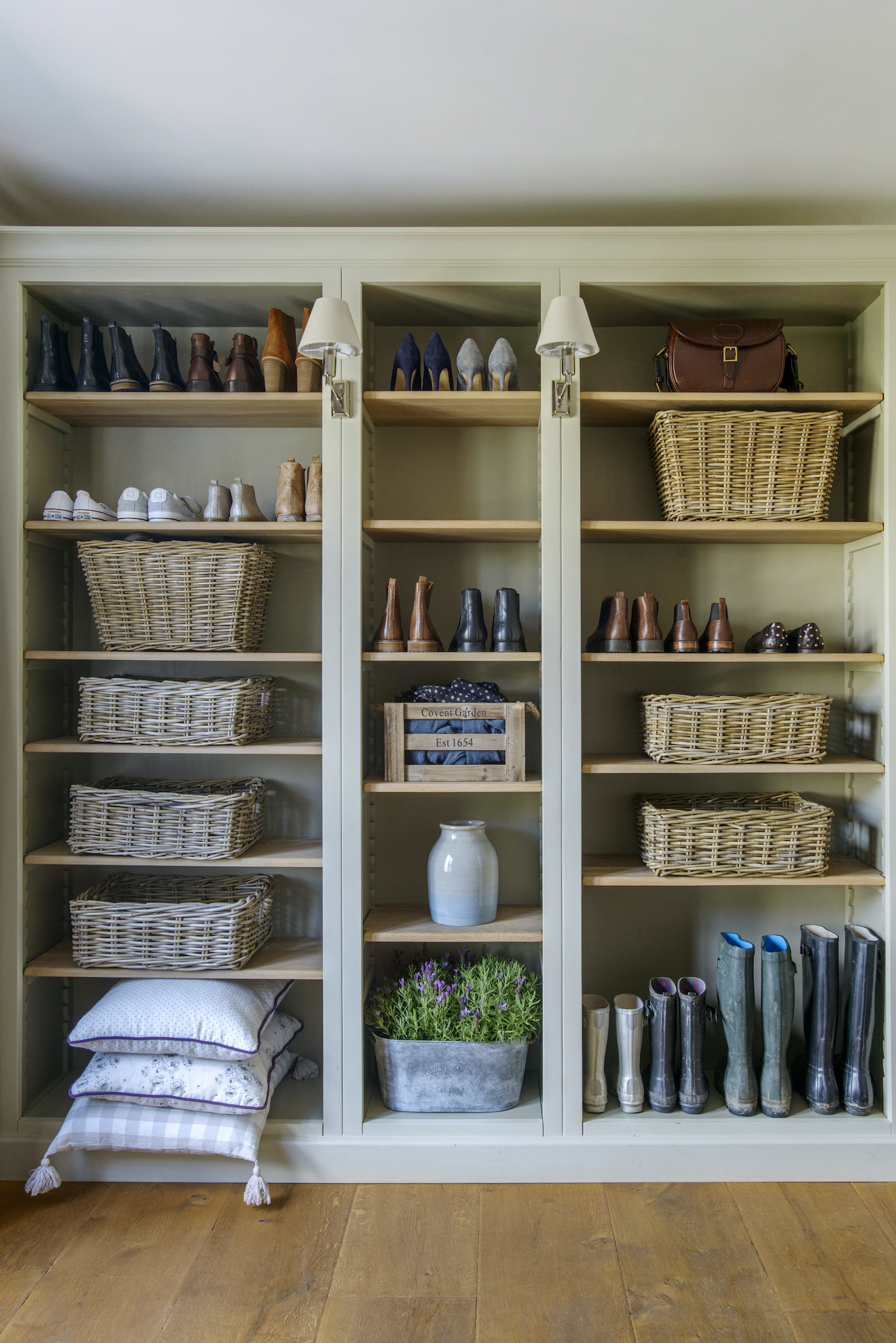
Shelving is another great way to create additional storage in a boot room – and perhaps a bit of decor, too. In this boot room, shelves have been utilized for shoes, decor, and baskets filled with miscellaneous items. It's a simple way to keep a mudroom tidy while still feeling lived-in and personalized.
'Shelving can be used for display purposes as well as storage in a boot room. Shelves can be accessorised with potted succulents or a simple large-scale scent diffuser,' suggests Jojo Bradley.
'Or for a more country feel, perhaps a riding hat and rustic storage baskets or boxes. The choice of beautiful hardware can elevate simple joinery, add a touch of luxury with antique brass tones for warmth.'
21. Consider overhead lockers
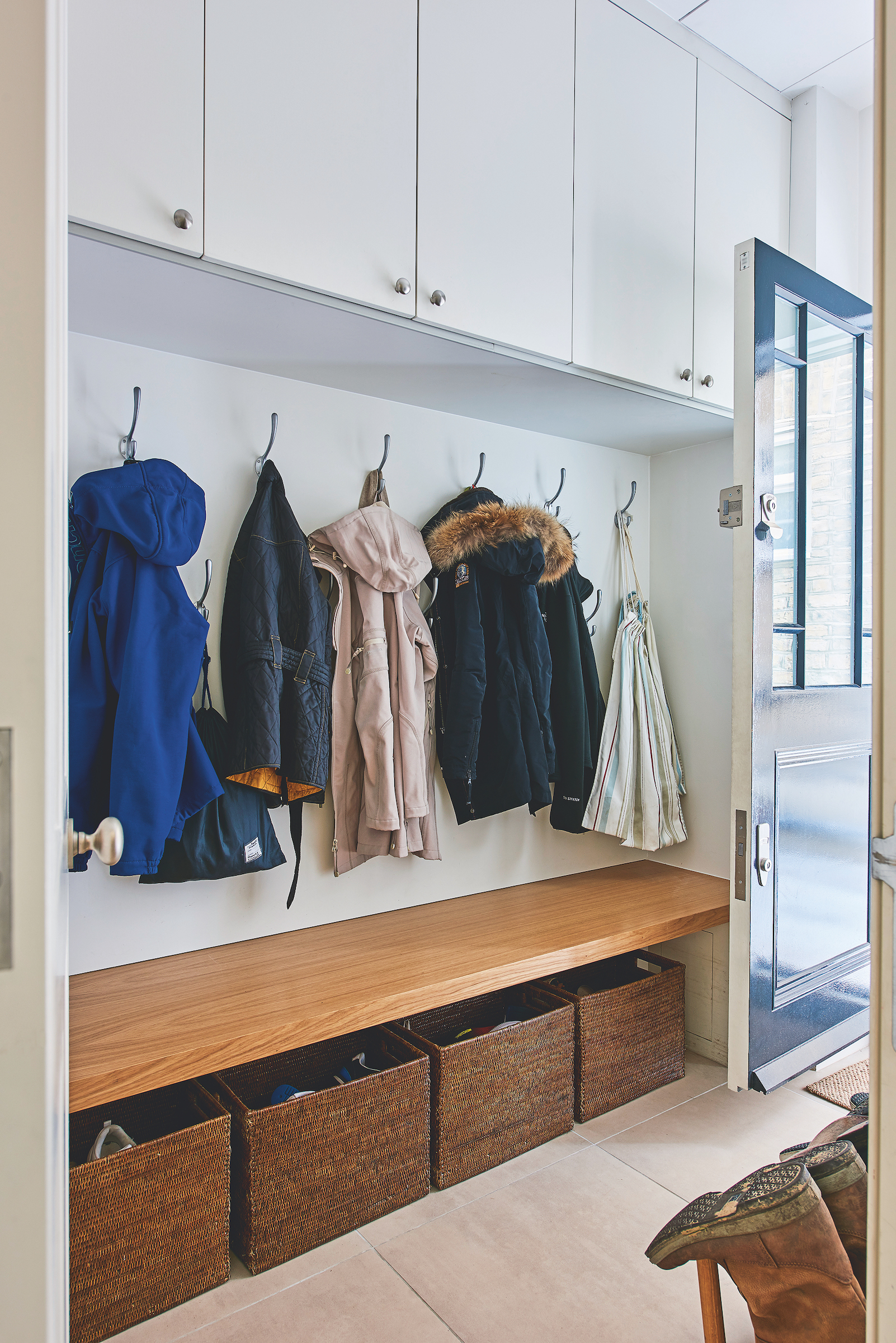
When space is tight, go vertical. Tall cabinets with overhead compartments are great for off-season items like tents or ski gear, while low-level cupboards near basins can hide cleaning supplies. Even narrow shelving beside a door or window can help. Alex Main recommends using sliding ladders on rails for safe access to elevated storage (a stylish touch, too).
22. Lean into a dark, muted palette
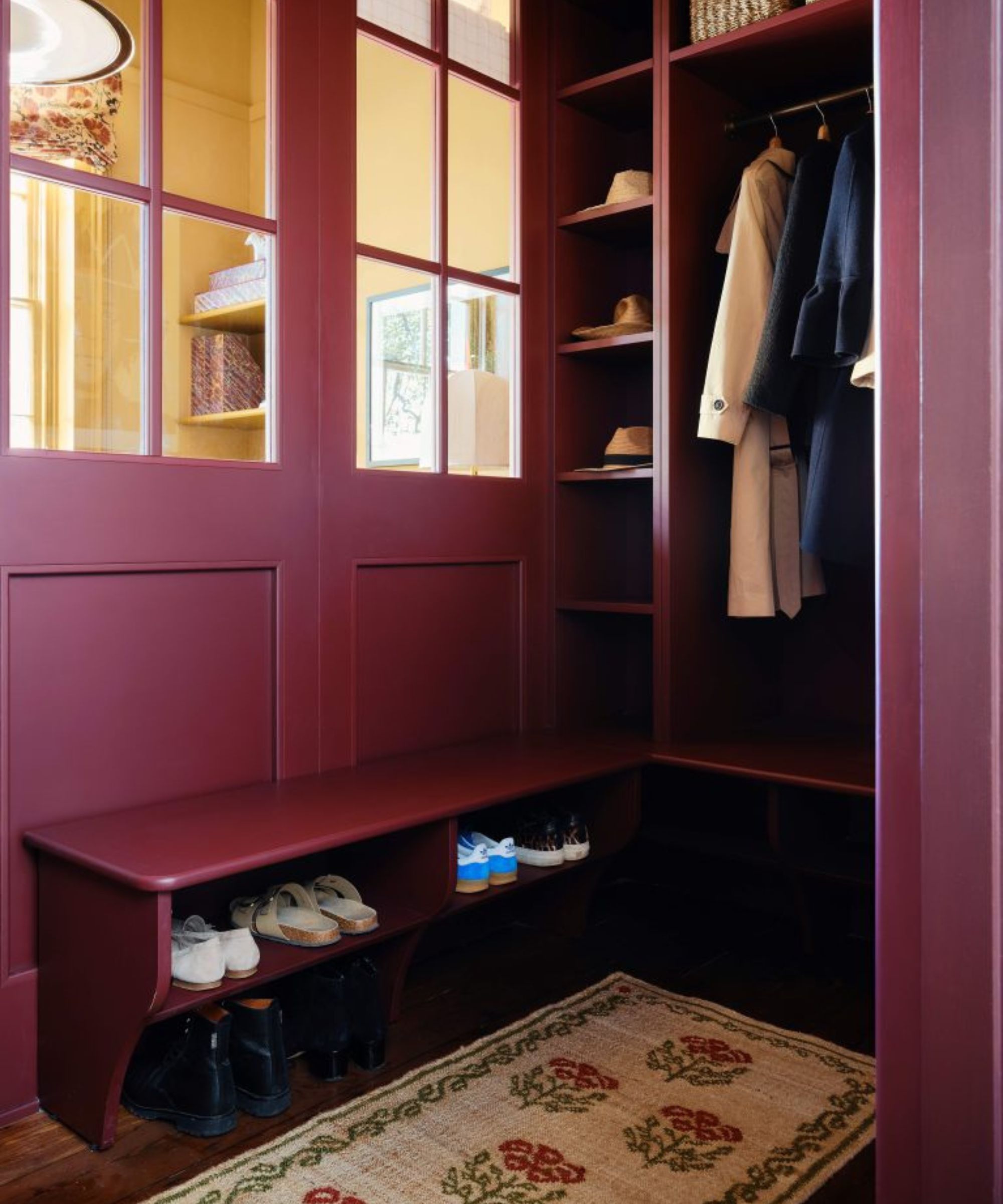
Boot rooms are messy by nature – think of them like a backstage area. ‘Earthy tones, deep greens, and rich charcoals create warmth and intention in what’s often a utilitarian space,’ says Jessica Hubner. These deeper hues also do a great job concealing scuffs, splashes, and fingerprints – meaning less maintenance and a longer-lasting finish.
23. Paint cabinets for a pop of color
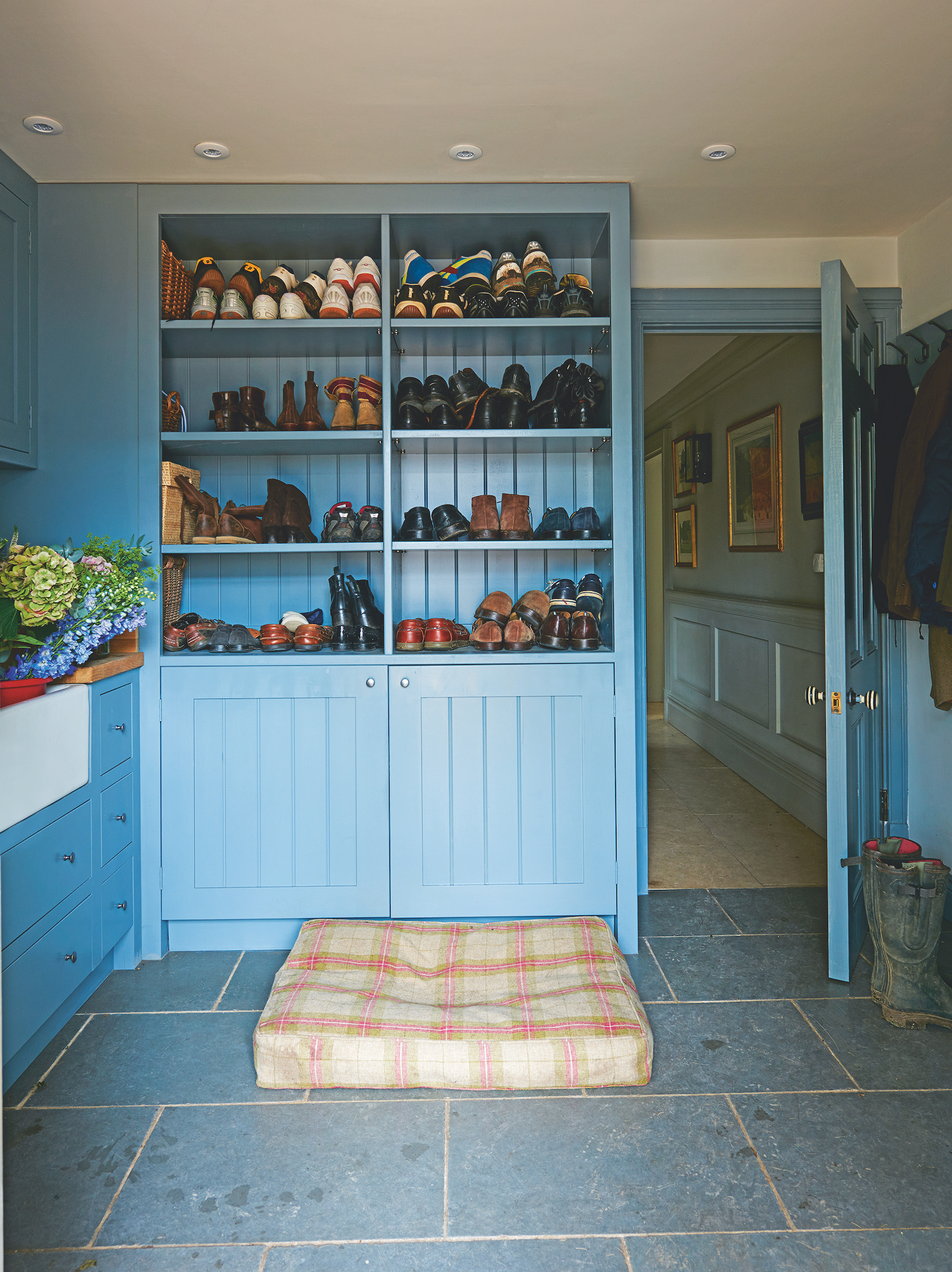
Light tones are great for brightening a small, tucked-away space. But don’t rule out bolder hues, either.
'Boot rooms tend to be on the smaller size, so soft neutrals work beautifully to give a light and breezy feel,' suggests interior designer Jojo Bradley. 'But I also like to paint walls and joinery in strong blue and green hues to create a rich and inviting feel.'
Pick hardwearing, wipeable paint that's specifically designed for high-use spaces such as boot rooms, where knocks and scuffs are common.
24. Decorate a boot room with wallpaper
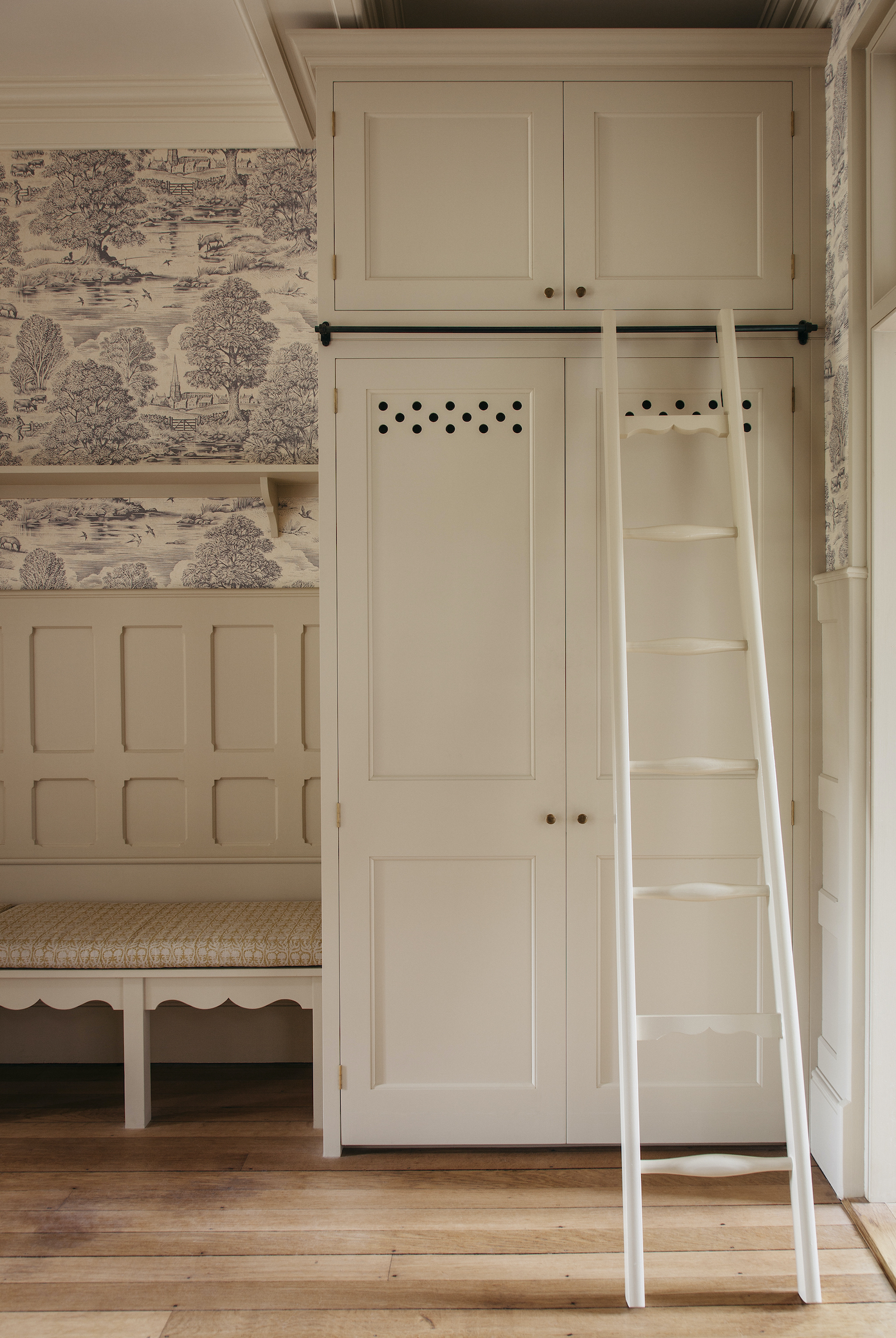
'A patterned wallpaper works beautifully in a boot room,' says designer Susie Watson. 'It adds interest to an otherwise quite functional room, particularly because you may not have space for many pictures or decorative items.'
Susie opts for a strong red or green wallpaper in many of her boot room projects, but contemporary papers like this gold design will add glamour to the space. Paneling on the lower half of the wall will protect from scuffs and marks, leaving the wallpaper above to draw the eye away from the boots and outerwear.
25. Use low-level, ambient lighting that doubles as decor
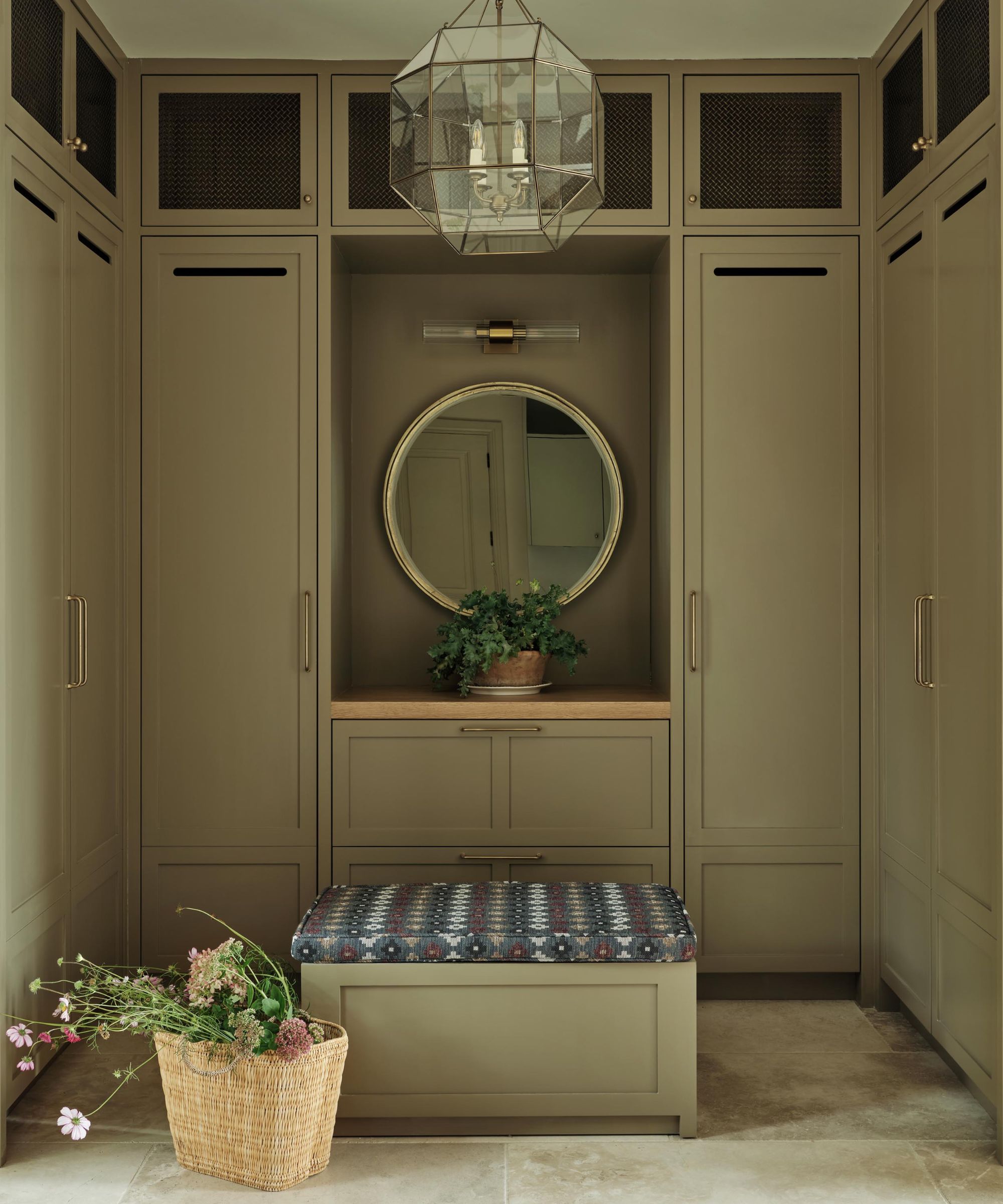
‘A softer lighting scheme can make a boot room feel more welcoming and forgiving,’ says Jessica Hubner. Wall sconces or under-shelf LEDs add atmosphere without turning the space, as she puts it, 'clinical.'
And don’t shy away from beautiful fixtures. 'Wall lights or pendants can create a lovely ambience and make the space feel just as curated as the rest of the house,’ notes Cherie Lee.
26. Introduce vintage pieces to add character to a boot room
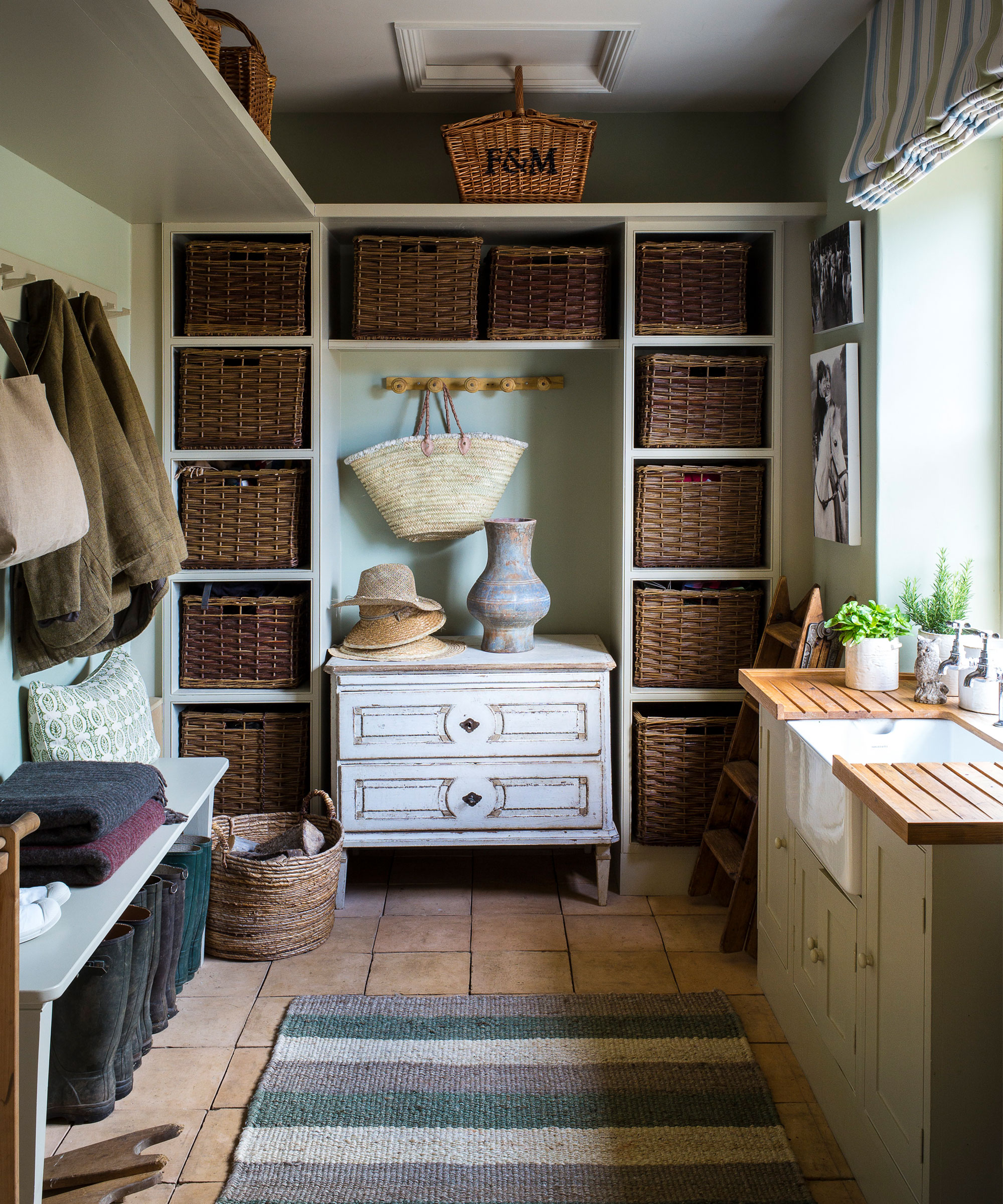
Vintage has never been more relevant – and boot rooms are no exception. For a break from built-ins, try antique furniture to give the space a little charm. A chest of drawers is great for hats and scarves, with hooks above for coats.
'Vintage wooden cubby or parcel storage is worth hunting down on eBay or in antiques shops as this can be repurposed for shoes and looks good too,' suggests Susie Watson. 'An umbrella stand is an essential for me, and this is something you can go quite decorative on.'
27. Suspend a rack from the ceiling
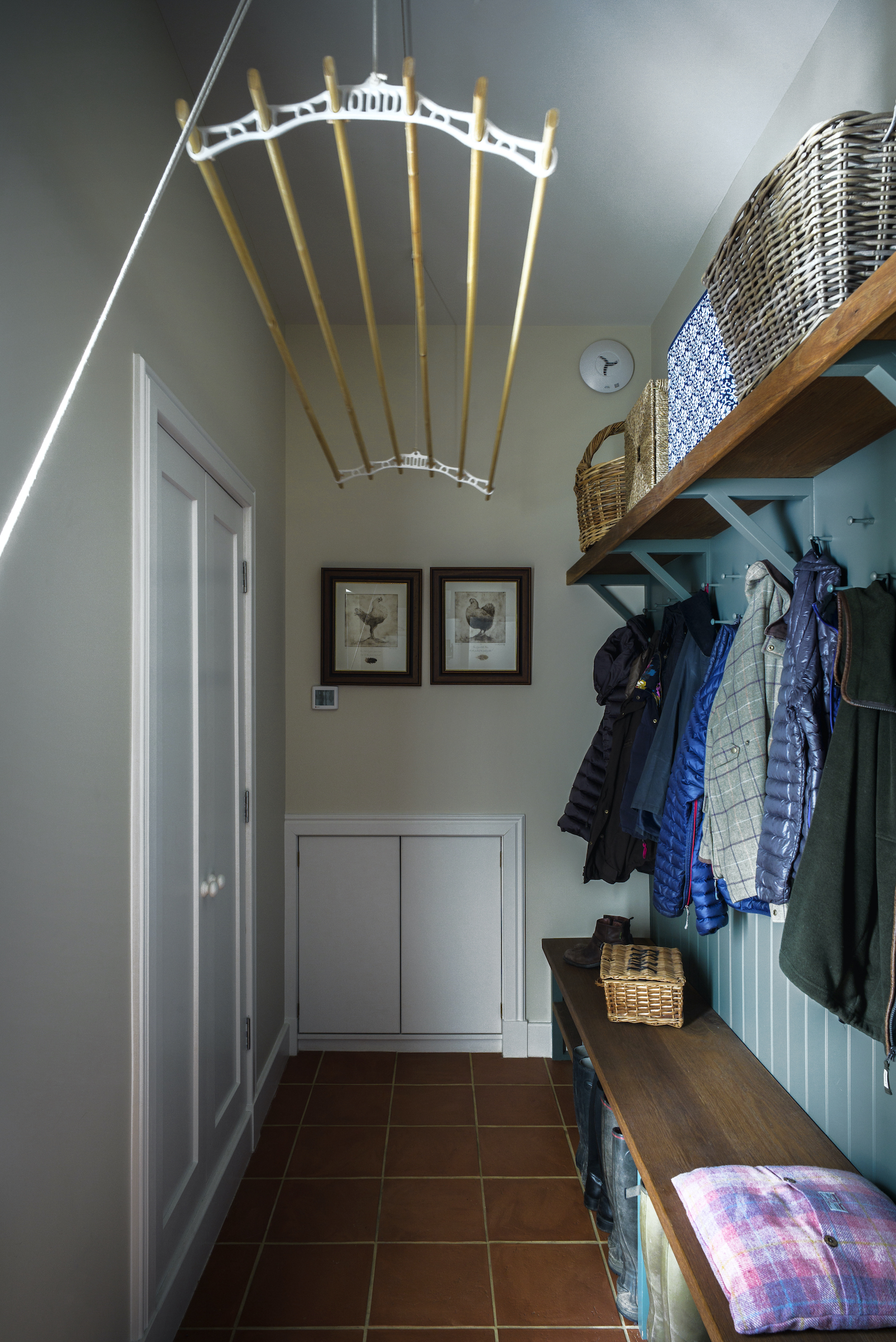
Fortune favors the bold – and in this case, the vertically savvy. For tall, narrow boot rooms where floor space is limited, a ceiling-mounted drying rack is a game-changer.
It maximizes airflow (remember that warm air rises), offers a dedicated space for damp gear, and pulls out of sight when not in use. Pair it with underfloor heating, good ventilation, or a dehumidifier to keep the room fresh and mildew-free
FAQs
Is there a difference between a boot room and a mudroom?
Technically, no – but functionally, yes. ‘While the two terms are often used interchangeably, there’s a subtle difference,’ says designer Juliette Byrne.
A mudroom leans more utilitarian – it’s usually tucked off a garage or back entrance and designed for heavy-duty use, she explains. A boot room, by contrast, is more curated. It’s often closer to the main hallway or porch and treated as an extension of the home’s overall aesthetic.
‘Boot rooms tend to be more styled,’ she adds, ‘and often integrated into European or alpine homes where the daily change of shoes or coats is more ritualized.’
What should you put in a boot room?
'When I’m working through boot room ideas with clients, I always recommend tiled floors with dark grout to hide dirt,’ says Dee Gibson. ‘Then it’s about layering in function.’
Start with the basics: a large coir mat at the entrance, sturdy hooks spaced generously for bulky coats, built-in storage, and a bench for pulling boots on and off. 'A radiator is ideal to keep the space warm in winter, and will help dry off any towel you use when you come in,' she adds. If you’re including a sink, go for a tiled backsplash and washable paint like eggshell. As for soft furnishings, opt for moisture-resistant, removable covers.
Designer Nick Cryer agrees: ‘At its core, a boot room should be designed for function, flow, and ease,’ he says. That starts with ‘ample storage, think sturdy hooks for coats and bags, cubbies or shelving for shoes and boots, and closed cabinets or baskets to tuck away seasonal gear.’ A durable, wipe-clean floor is essential. So is a comfortable bench and strong lighting, notes the designer.
And if you want to go the extra mile? A sink, dog bath, or even a compact washer can add utility, especially in rural or family homes. ‘Finally,’ says Dee, ‘a few lavender pouches will keep clothing smelling fresh and help to make your home smell nice.'
For a full breakdown, see our guide: what do you put in a boot room?
Does a boot room really need a sink?
'A sink can be helpful, particularly in rural settings or family homes, but it’s not essential,' says interior designer Juliette Byrne. If plumbing isn’t an option, she suggests an oversized tray for boots, layered mats, and durable, easy-wipe surfaces instead.
The key is 'thinking in zones,' she adds: ‘one for cleaning off, one for storage, one for transition.' Even a vintage bucket for dog towels or garden tools can serve more purpose than you think.
What boot room mistakes should I avoid?
‘There are a few common missteps that can quickly turn a boot room from elevated to underwhelming,’ says Nick Cryer. The first is ‘prioritizing aesthetics over function,’ he says. ‘While it’s tempting to design a beautiful space, a boot room’s core purpose is utility. If there’s not enough storage, seating, or durable materials, the room won’t perform well – no matter how stylish it looks.’
Juliette Byrne echoes a similar sentiment, noting that one major misstep ‘is over-decorating without function.’
Another red flag: poor layout. 'Poorly placed hooks, cramped benches, or awkward door swings can make the space feel chaotic rather than calm,' Nick explains.
But the biggest boot room faux pas? Underestimating how hard the space works. ‘Poor flooring choices, for instance, or lack of ventilation – these lead to damp, cluttered, unpleasant spaces,' says Juliette.
Jessica Hubner sums it up best: ‘A boot room should be durable, forgiving, and unapologetically practical. Embrace the messier moments of family life – mud, dogs, school bags – and design around them, not in spite of them.’
A boot room adds structure to the chaos. If you’re reworking an existing space, begin by decluttering your mudroom or boot room: editing it down, taking stock, and being honest about what needs a place. From there, design with purpose, so you can create a storage areathat supports how you actually live.







